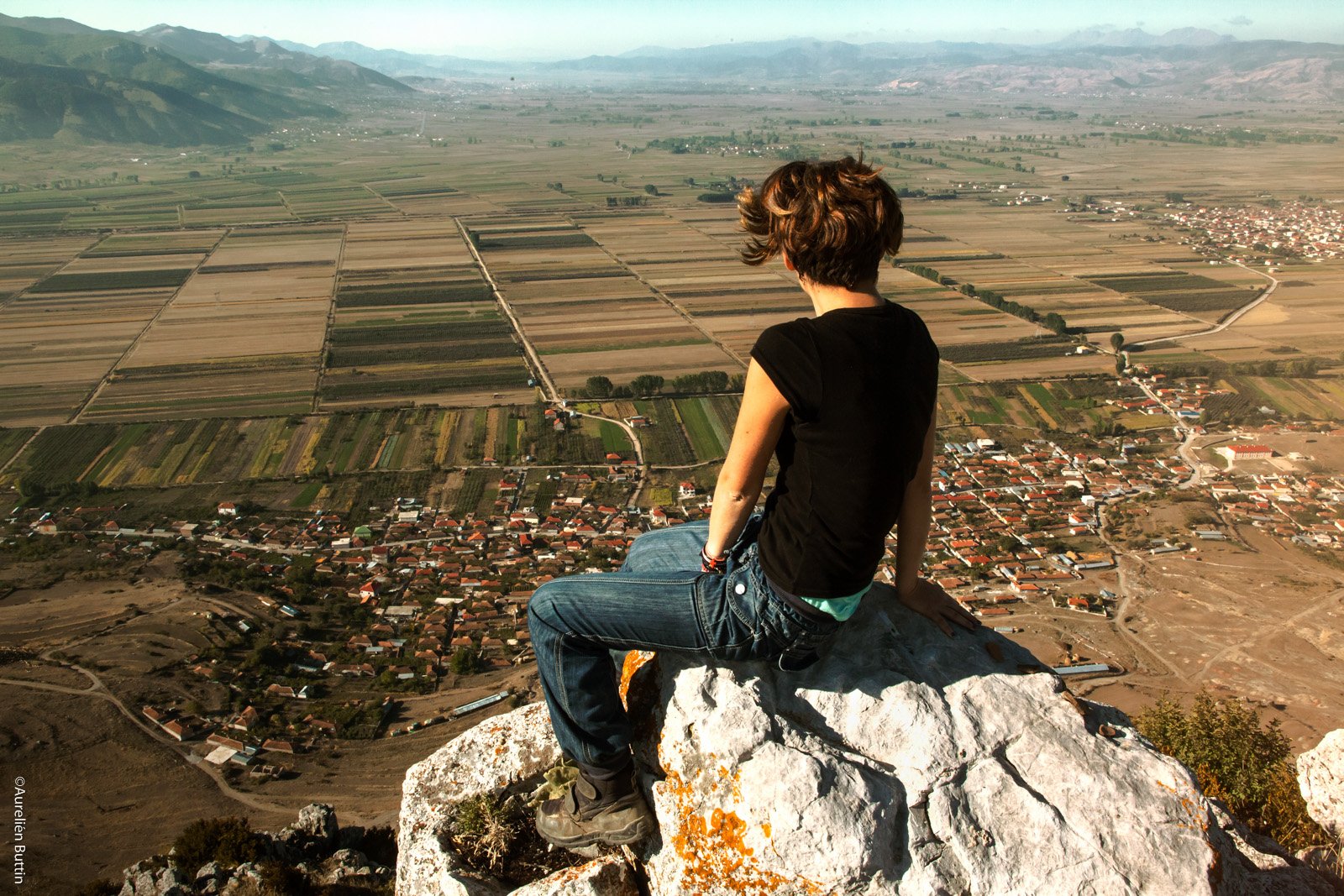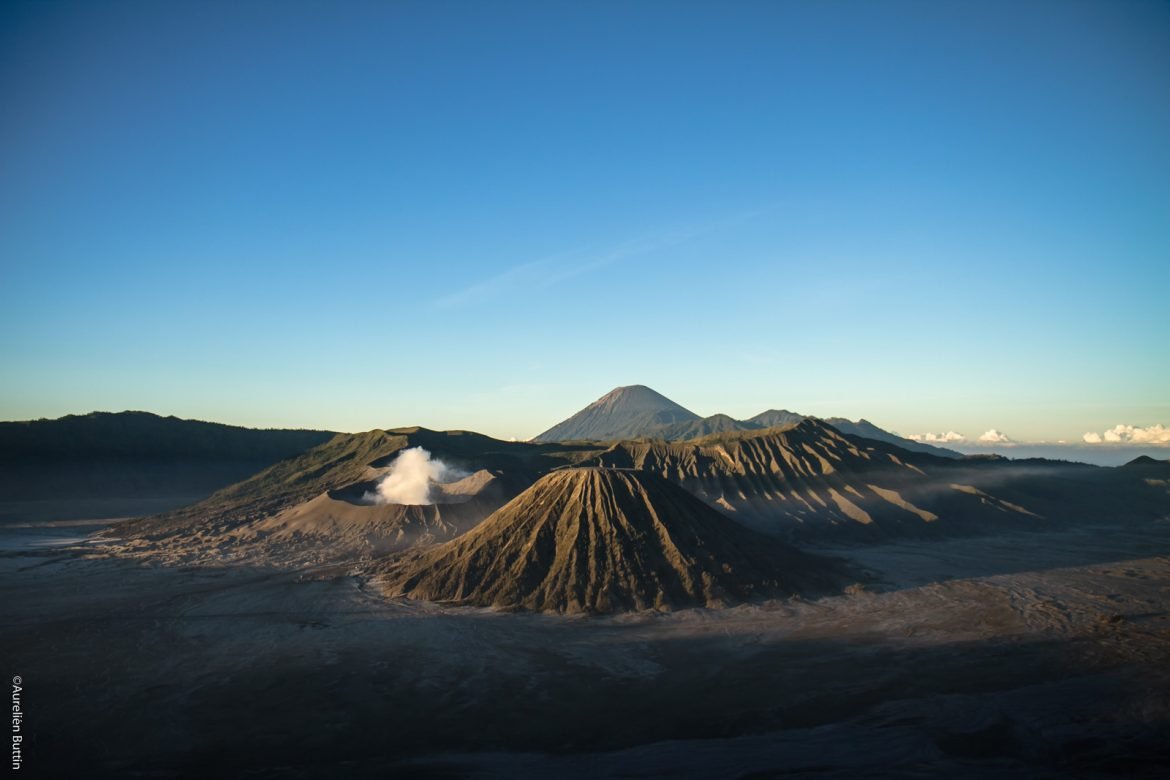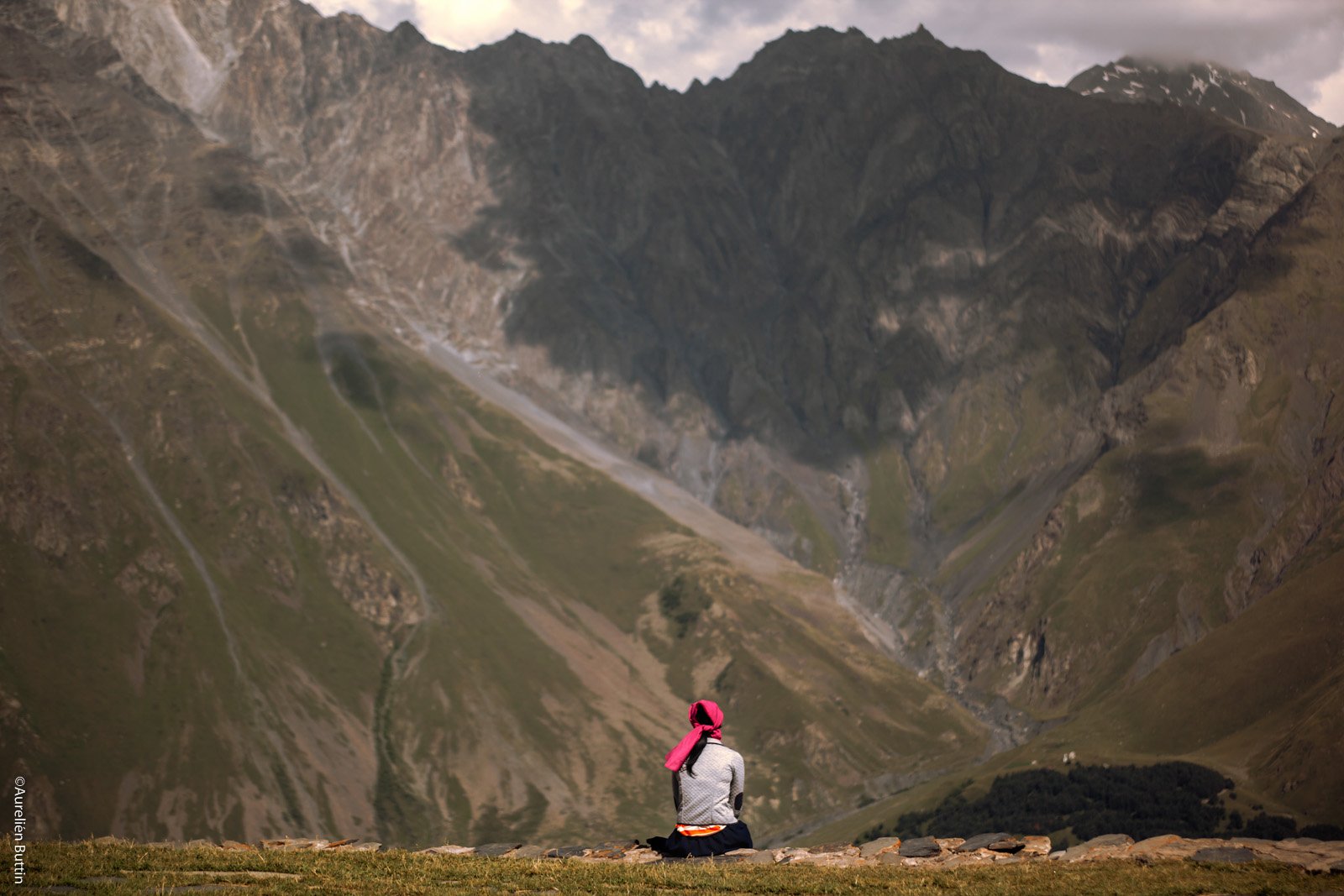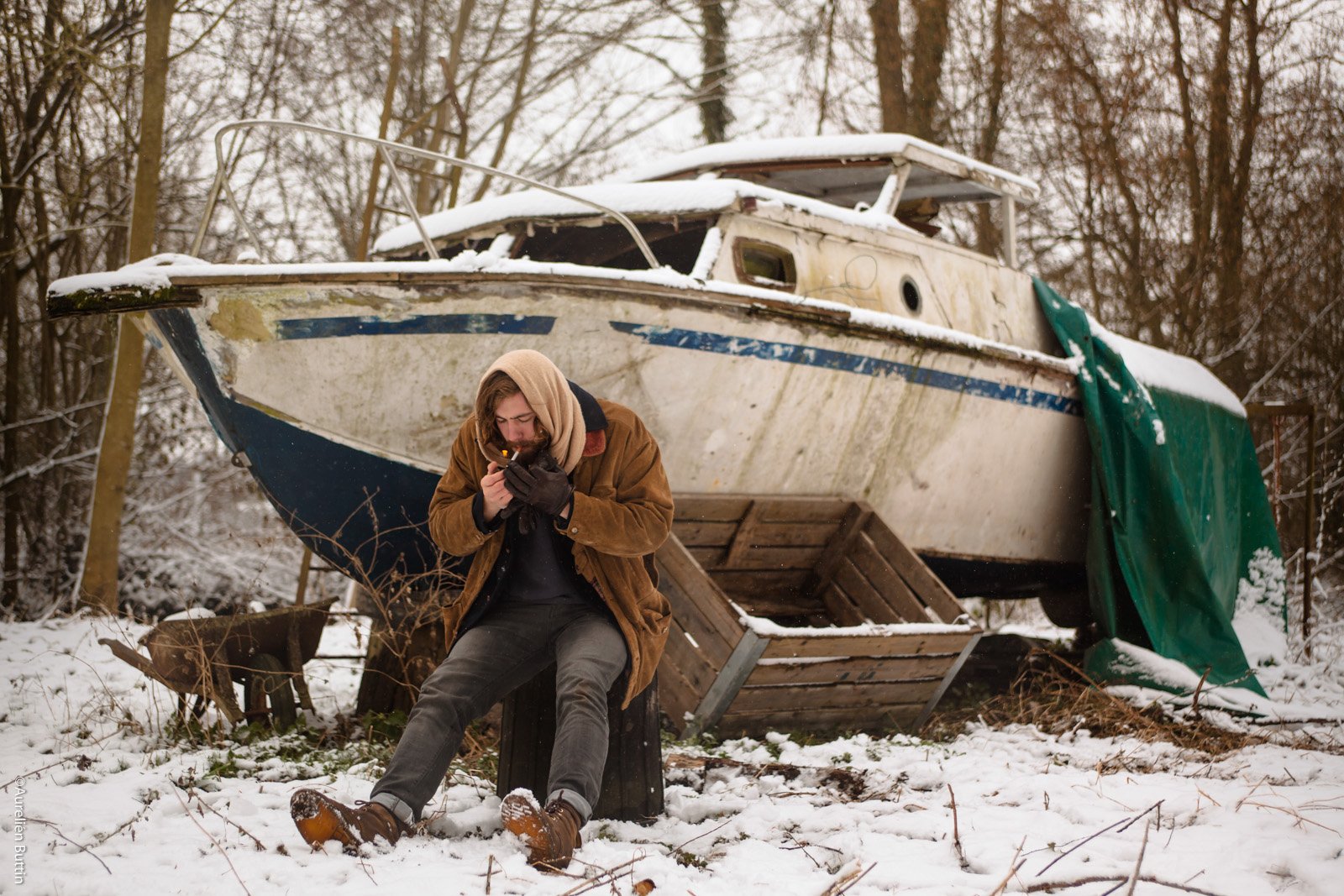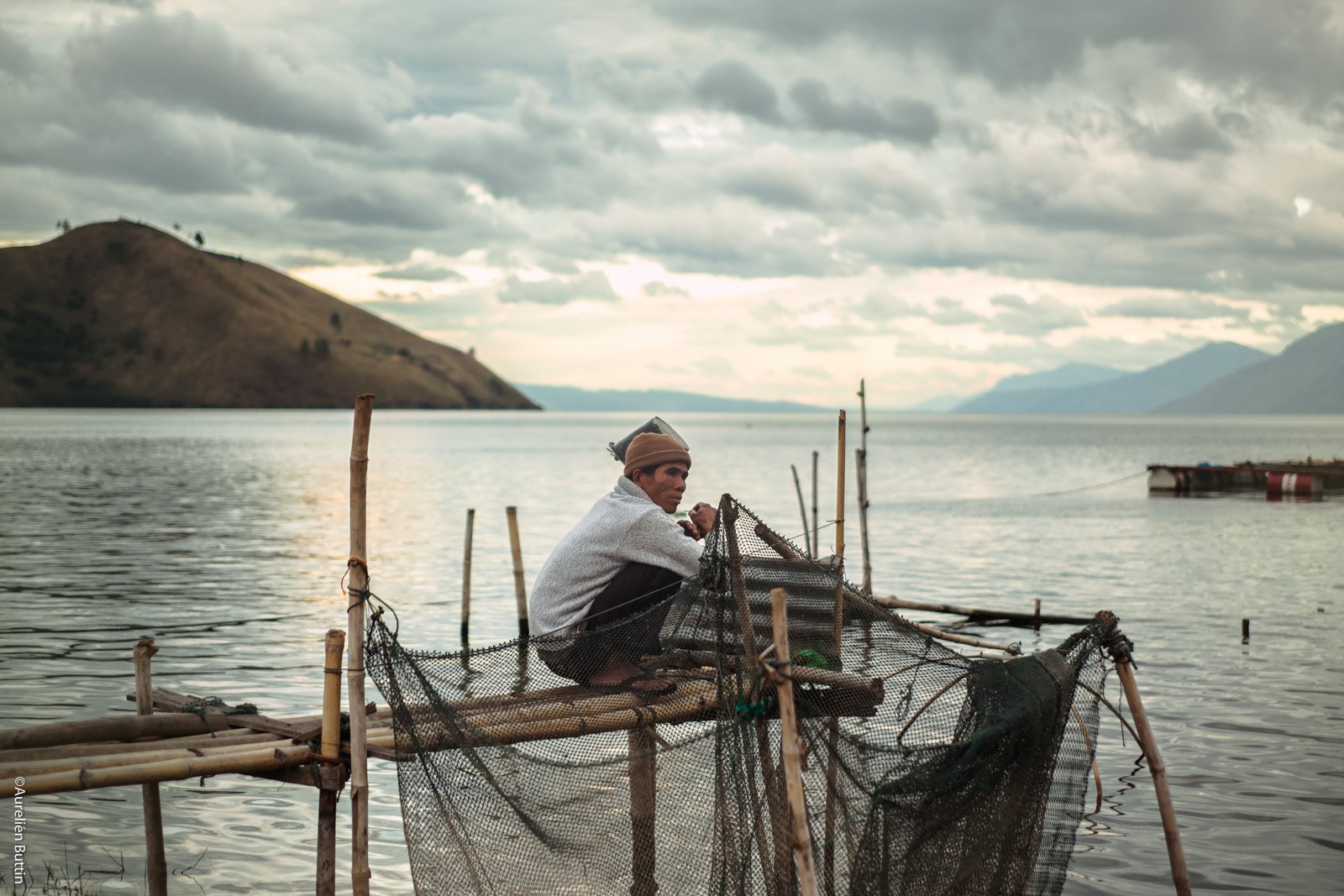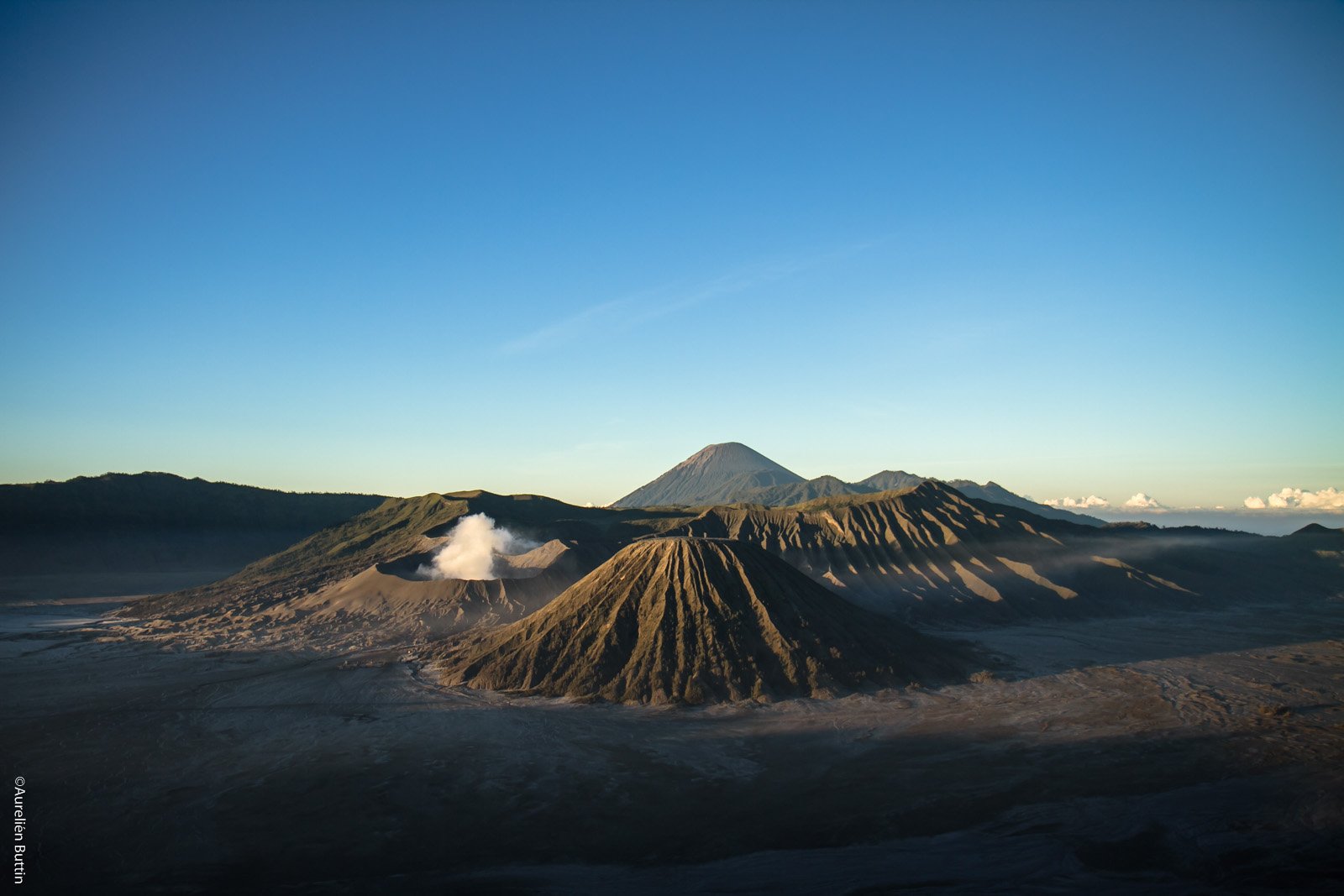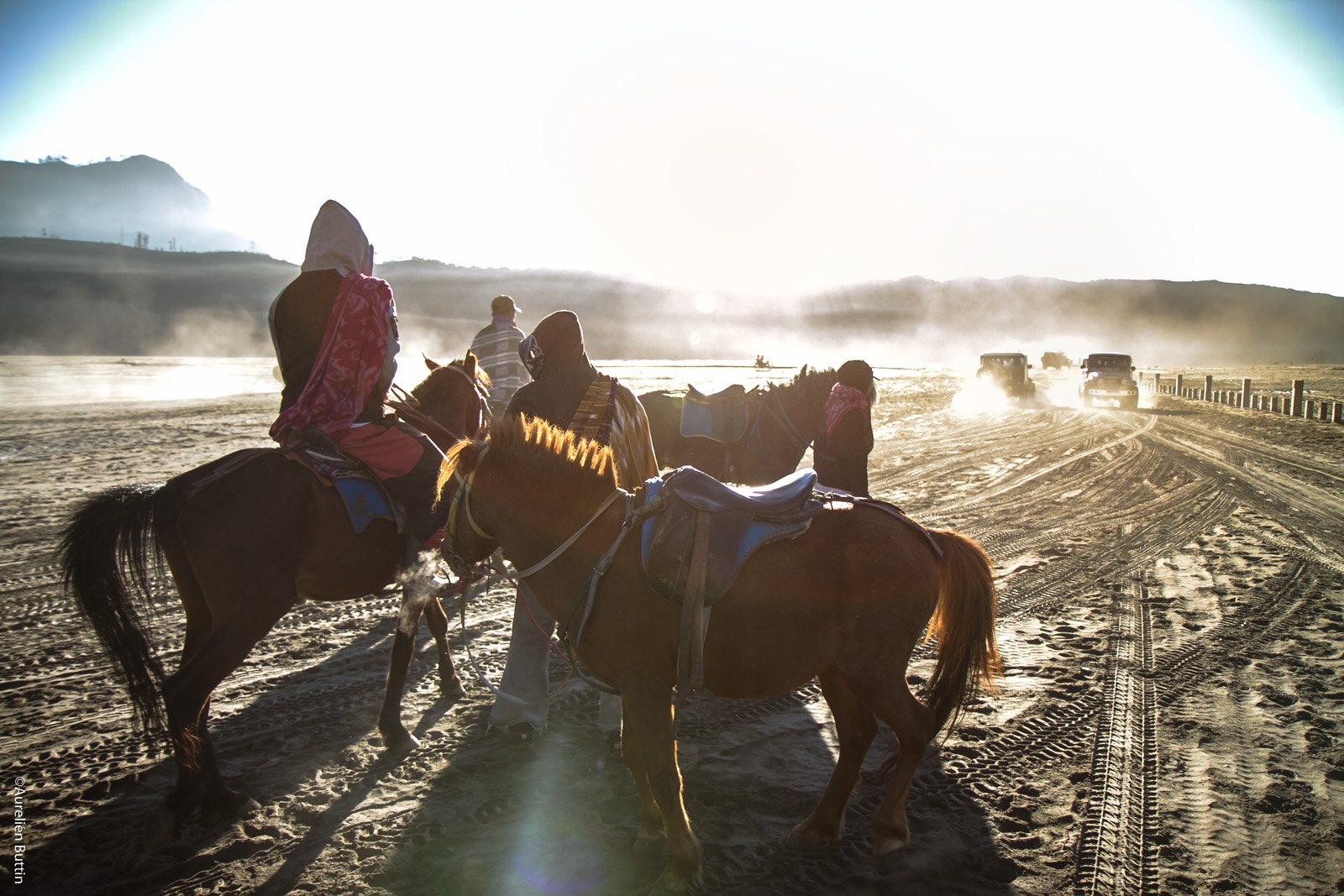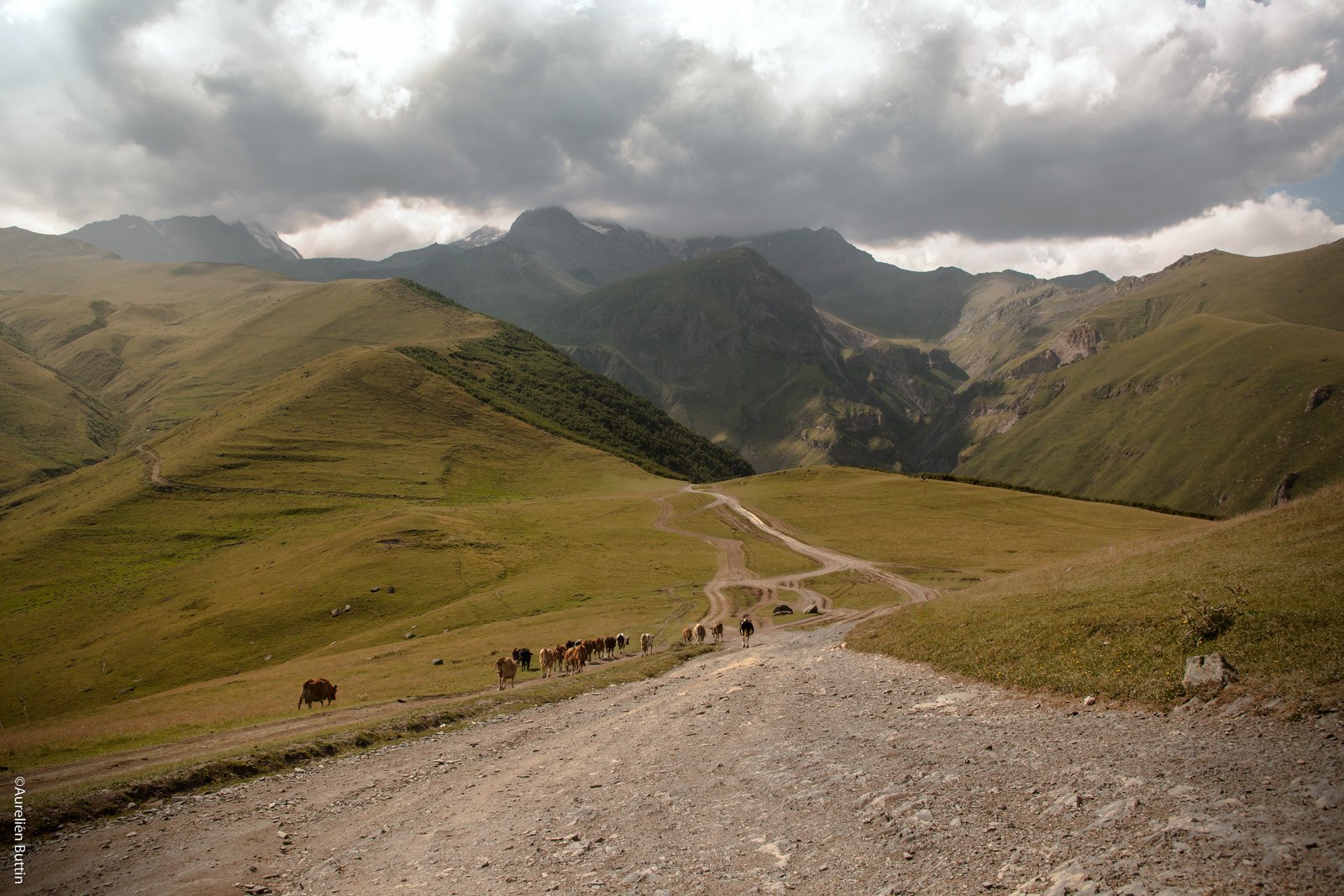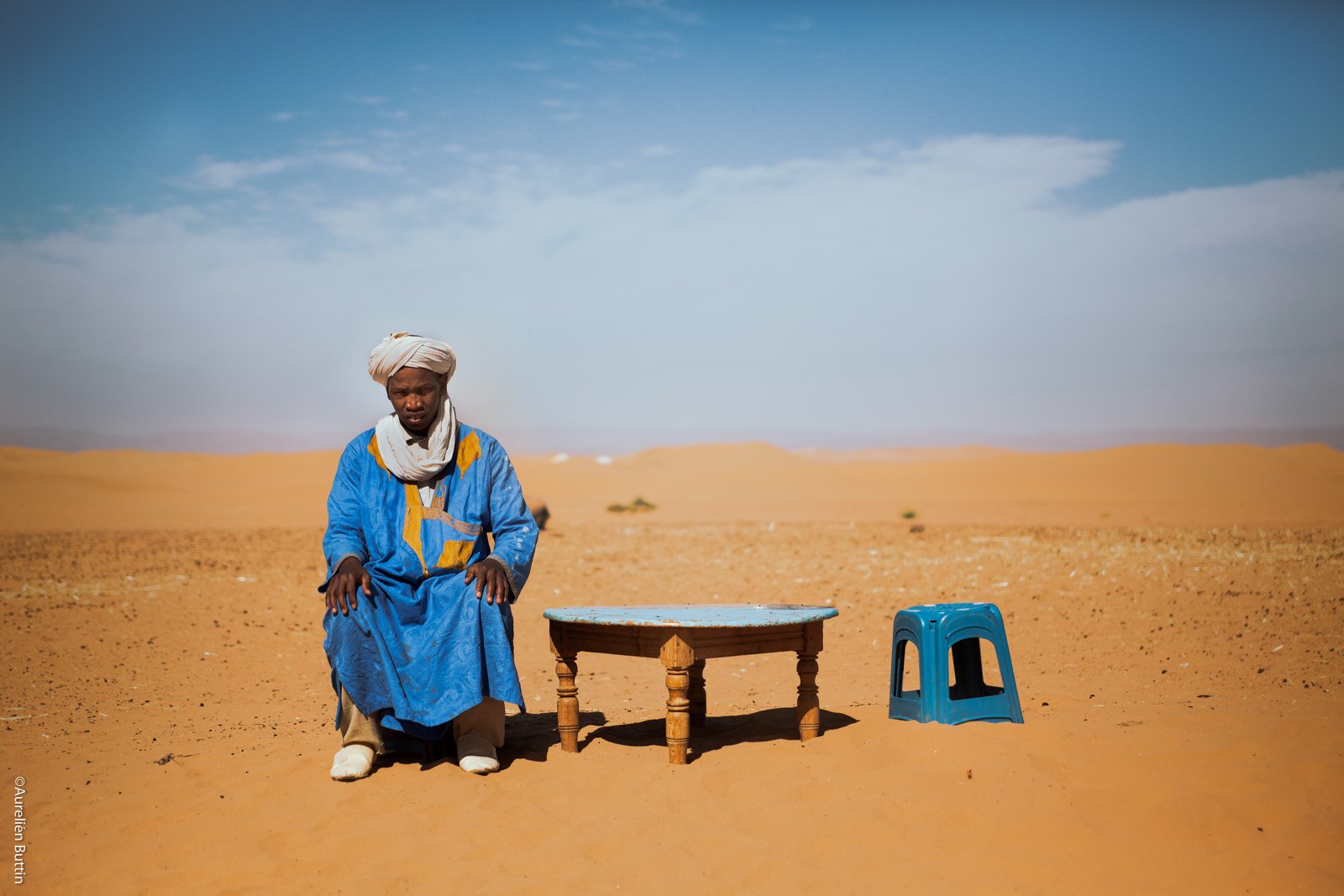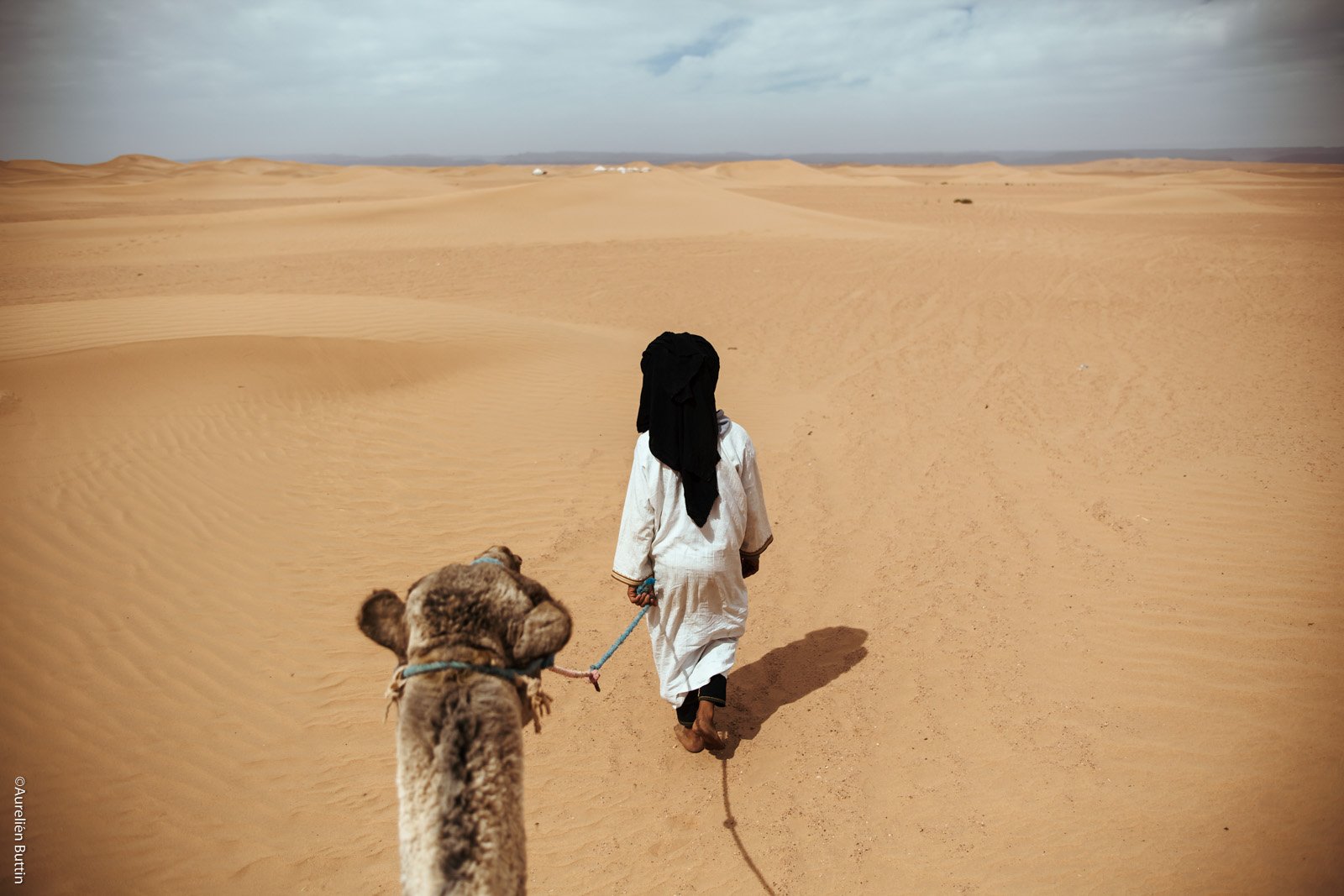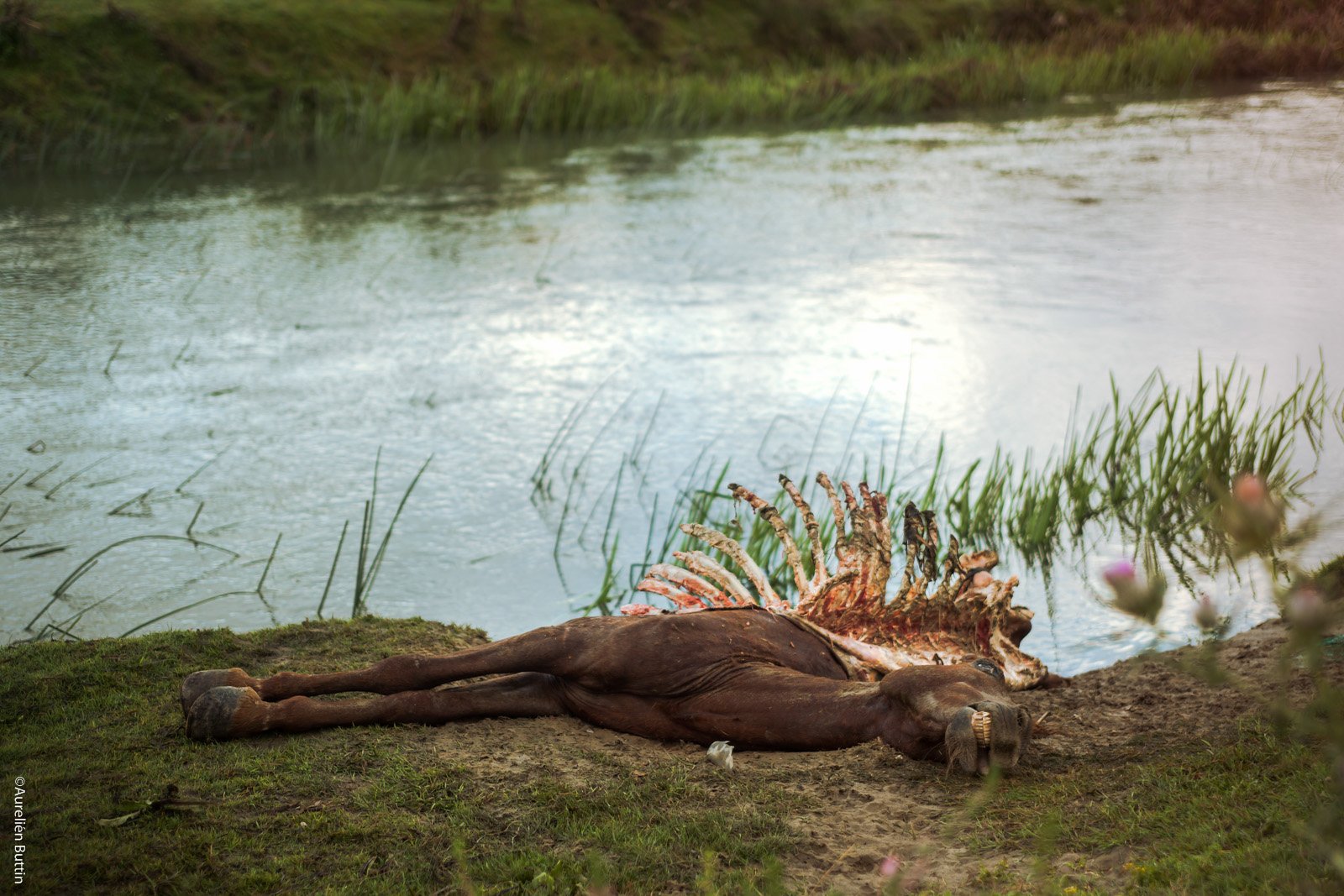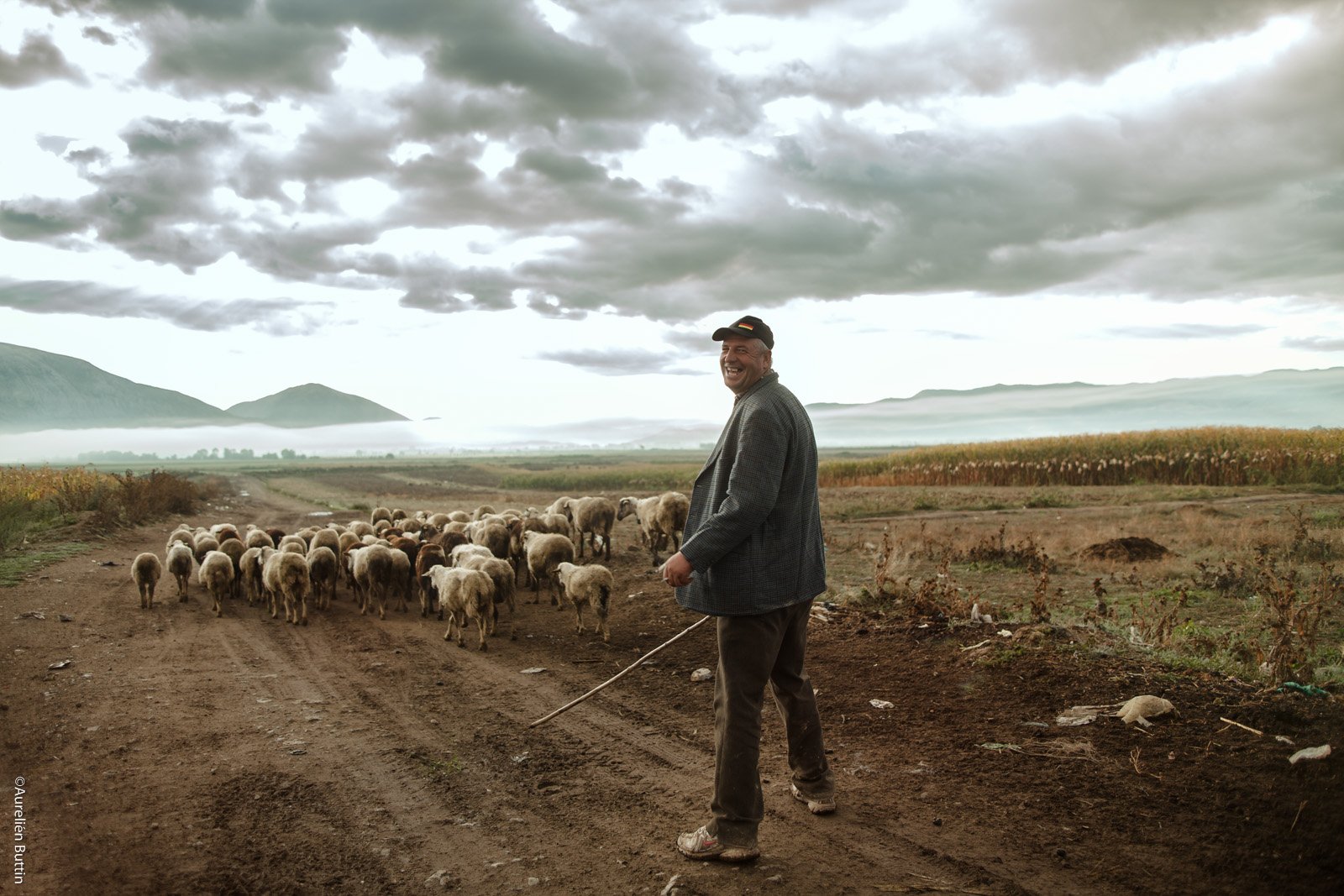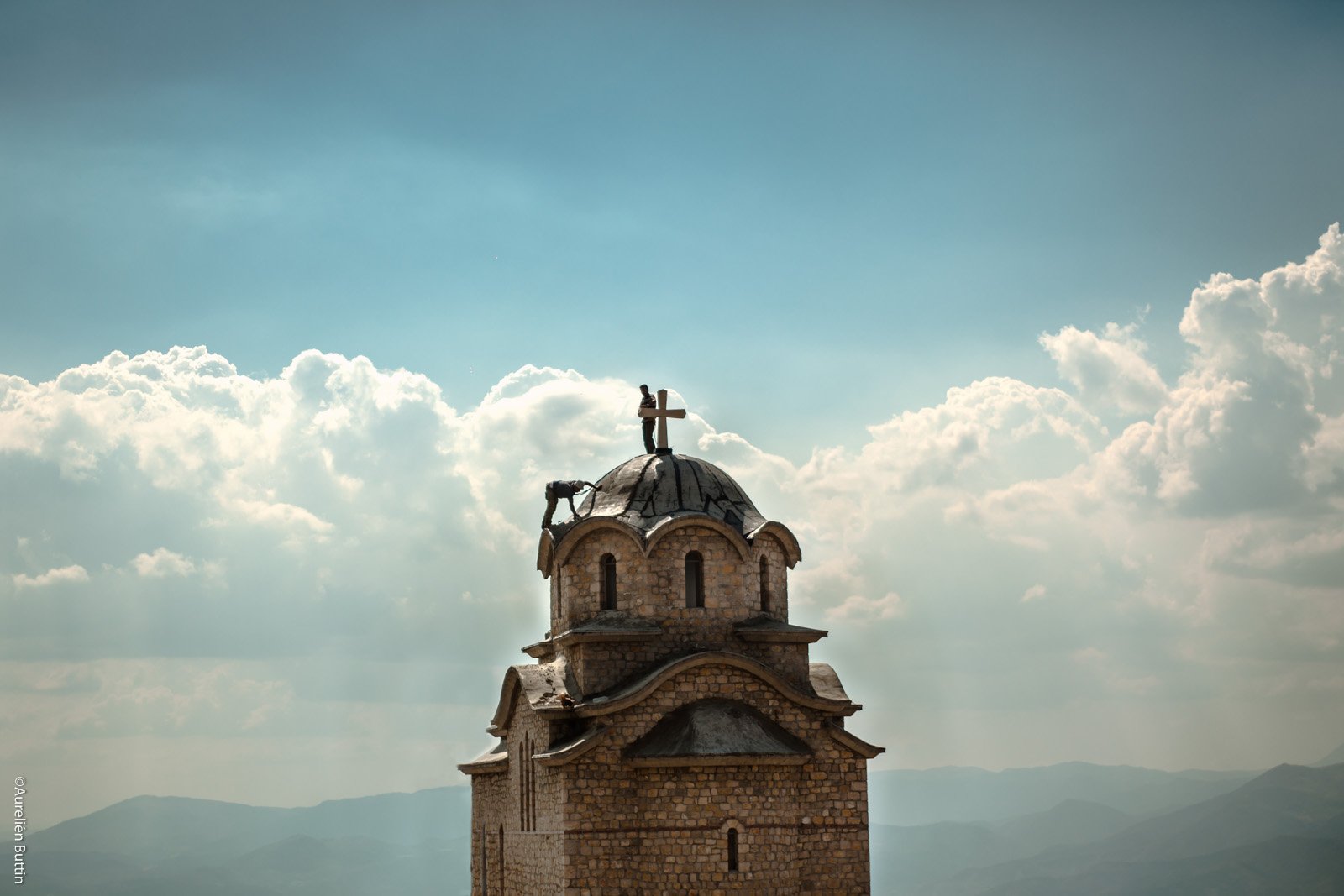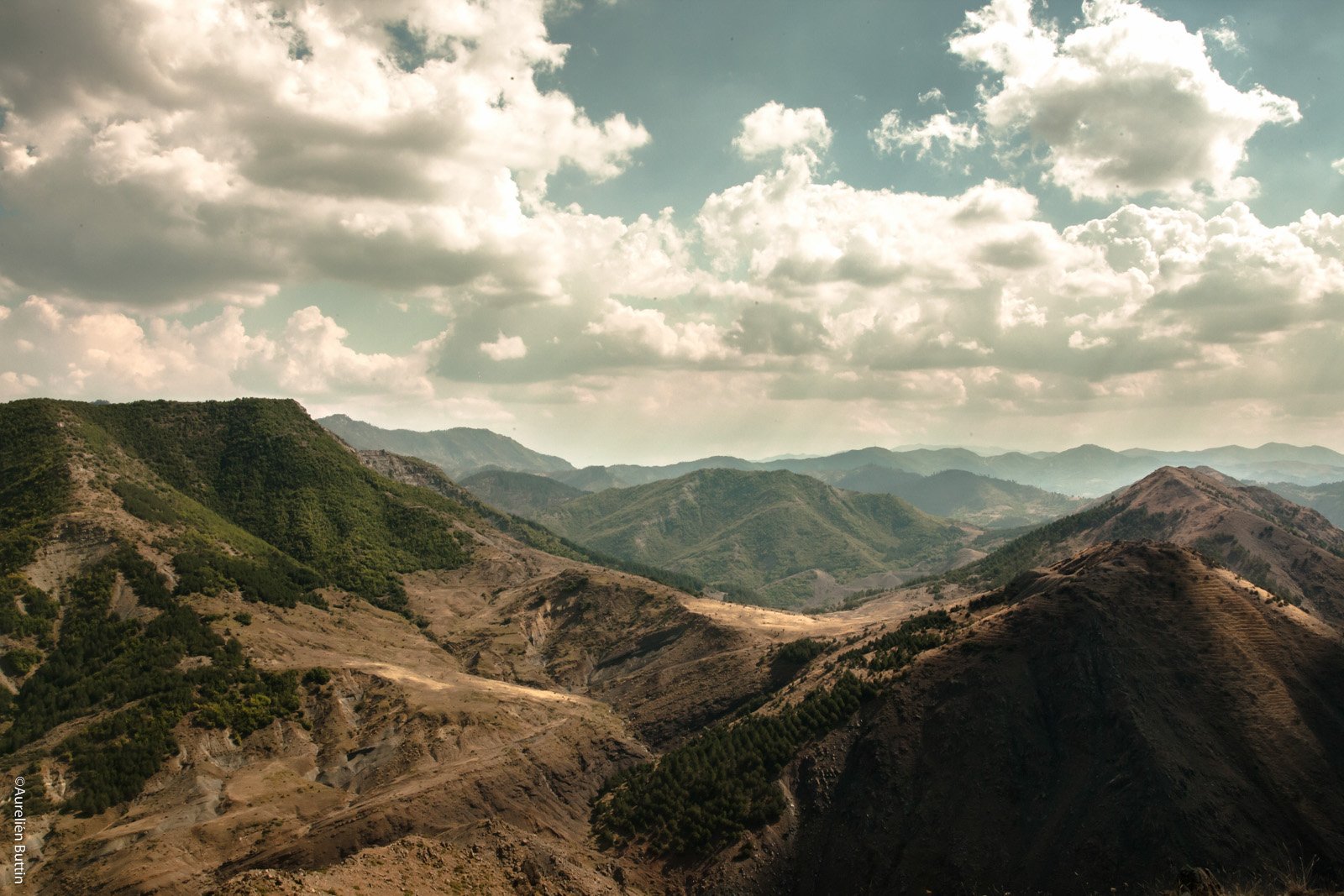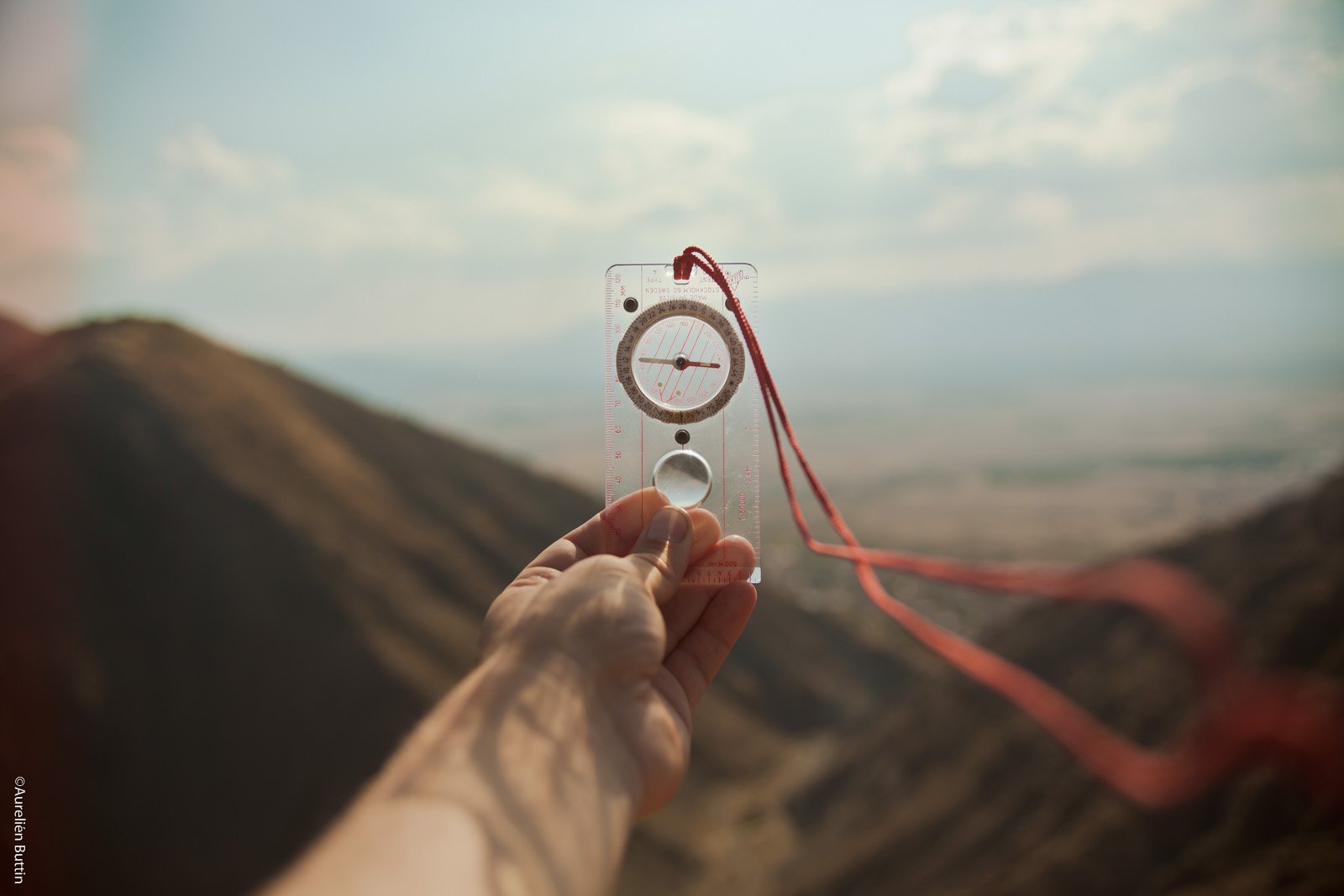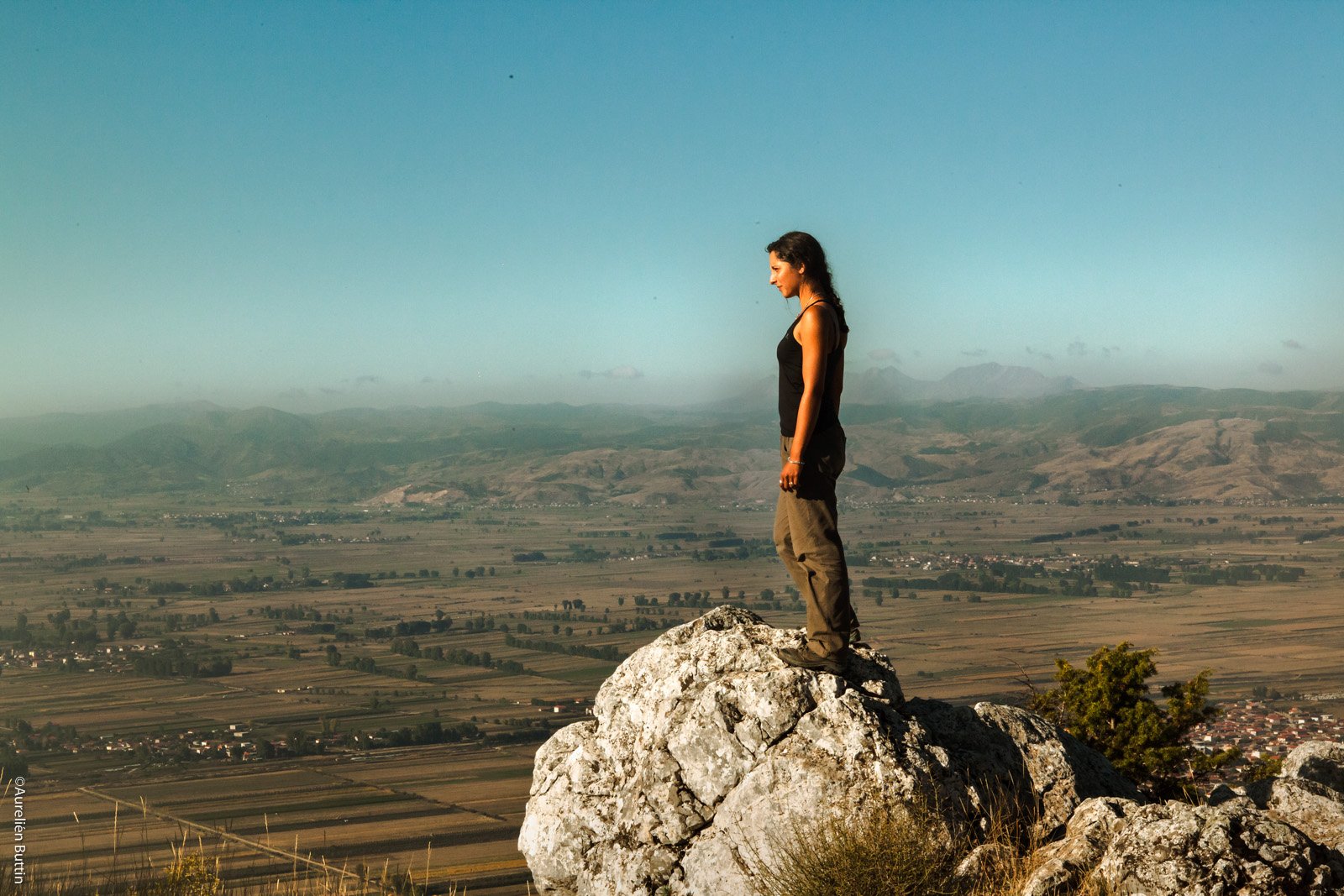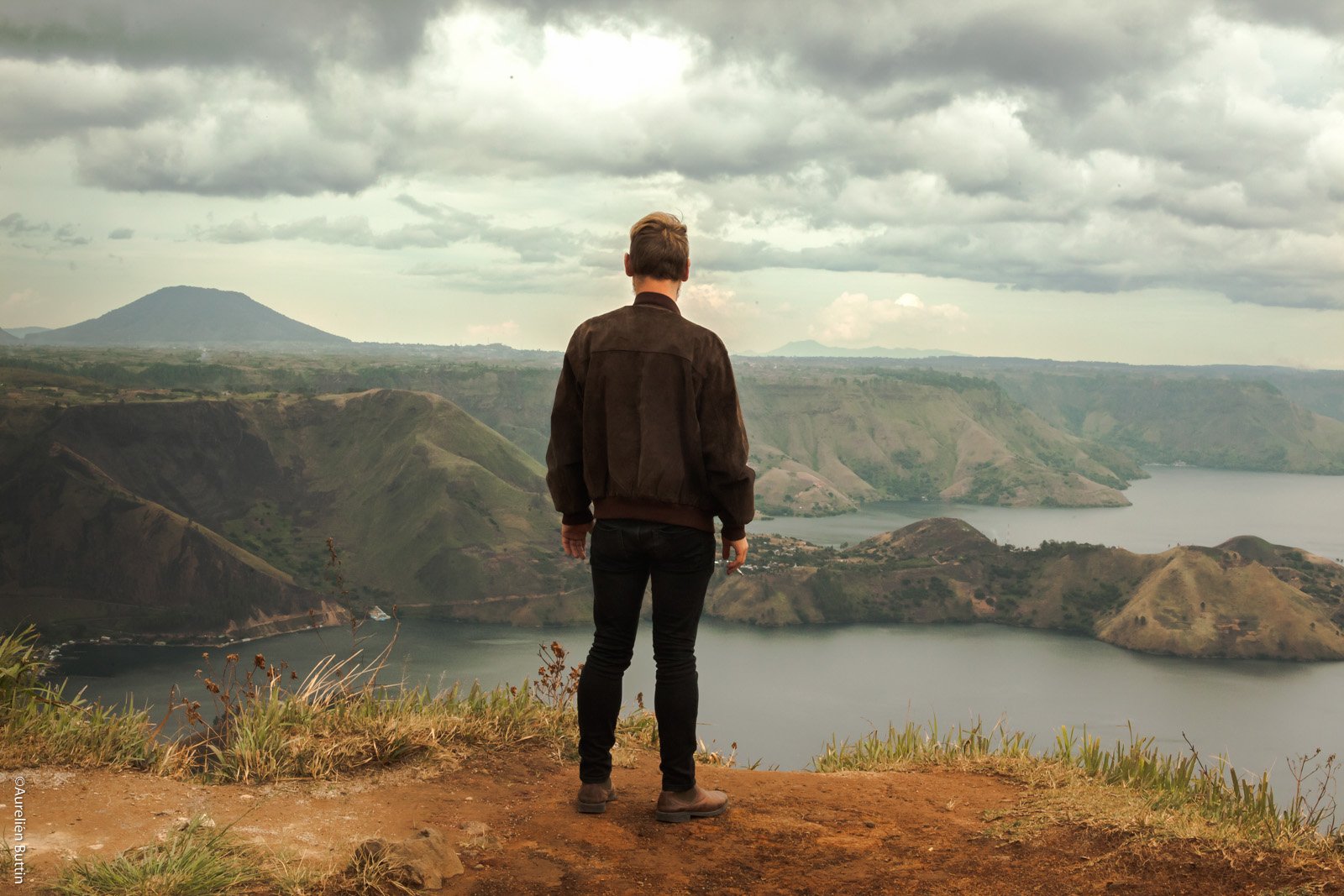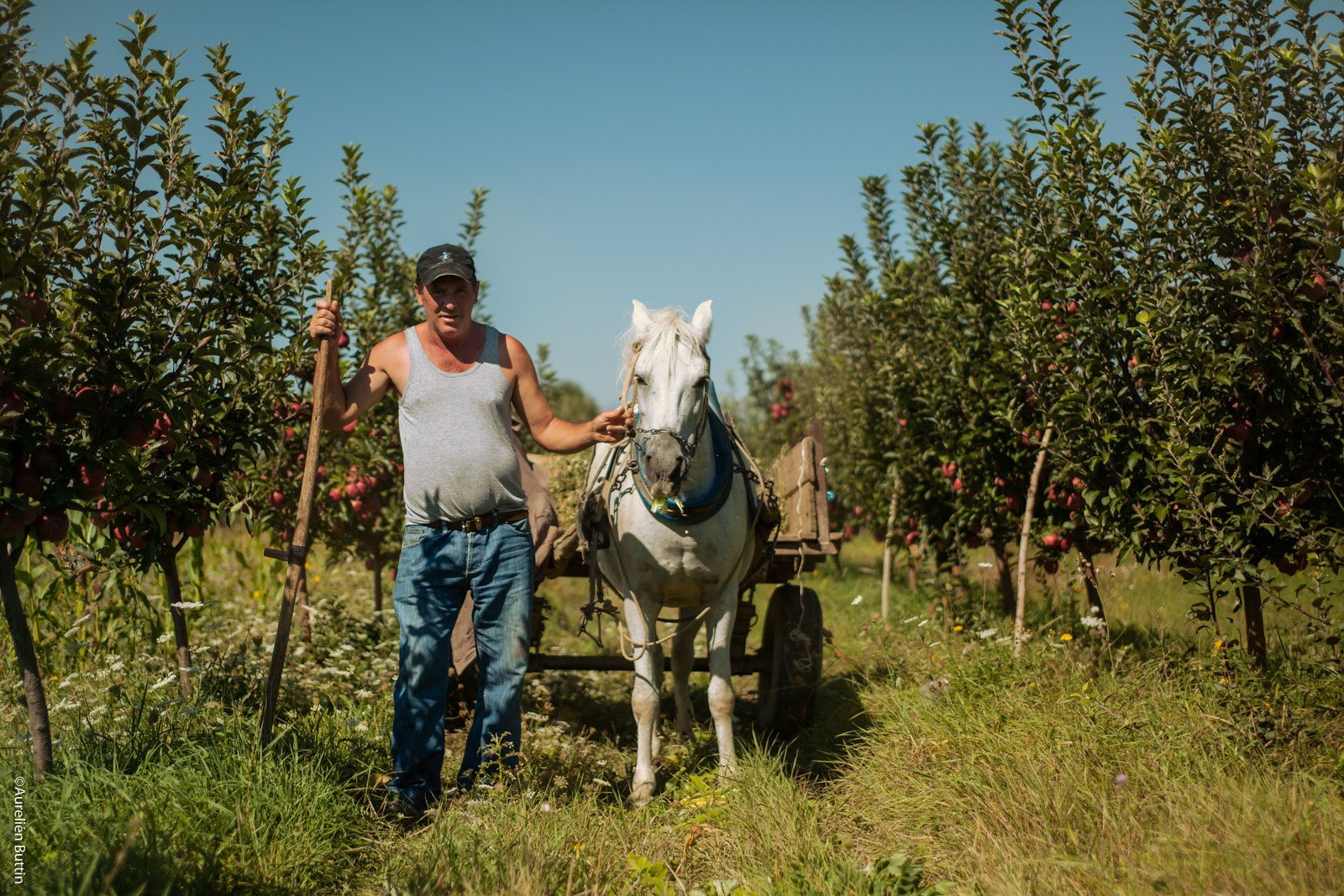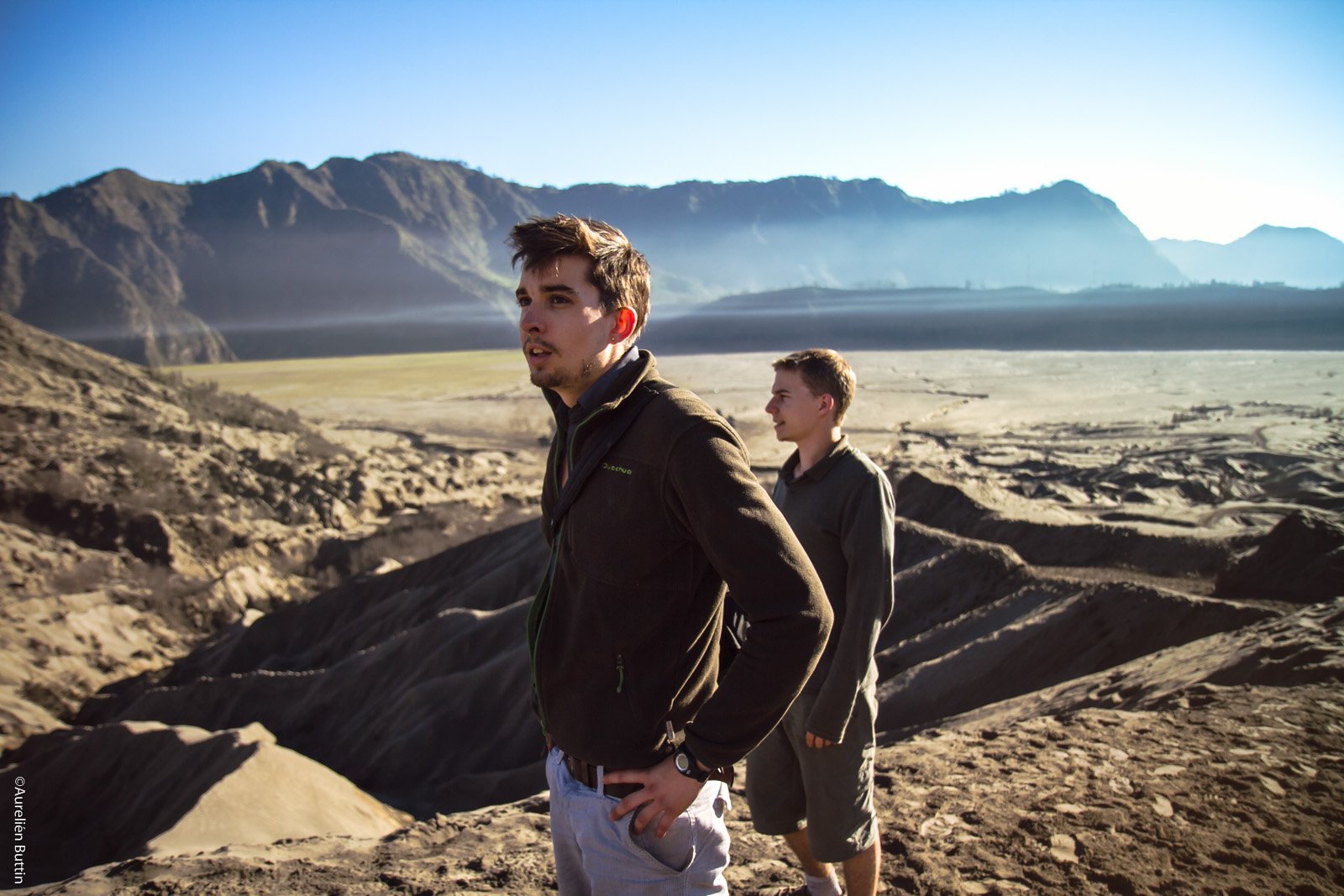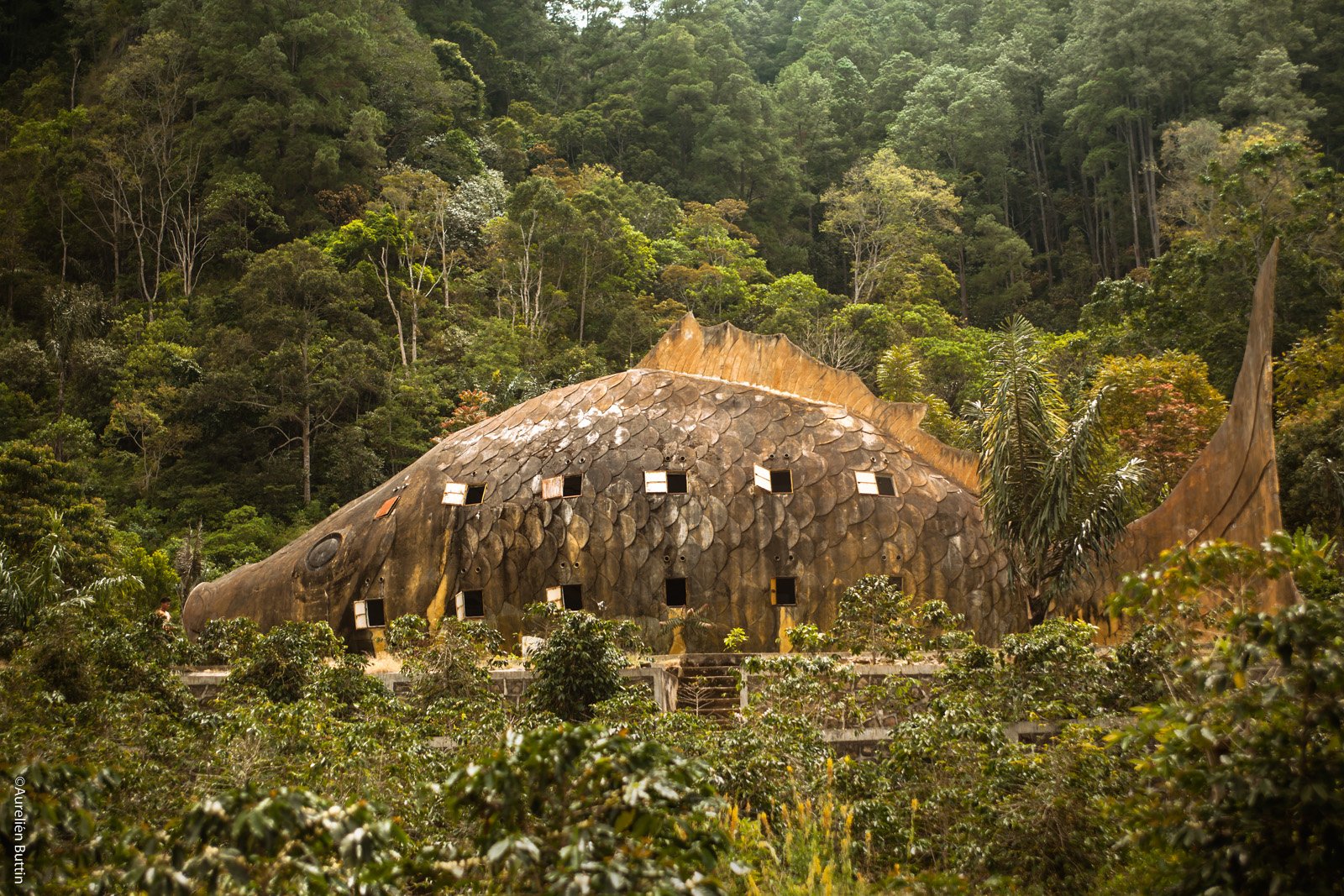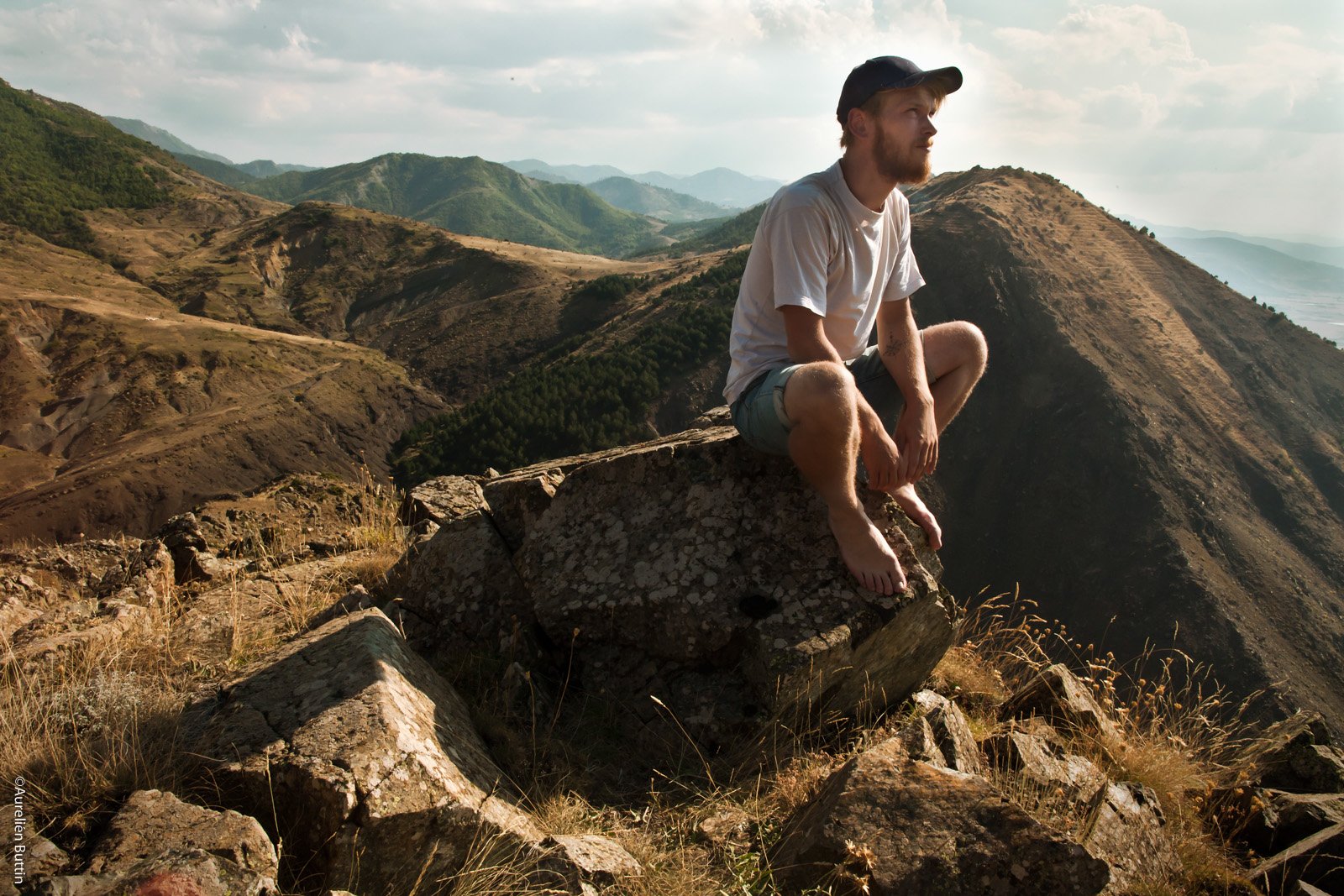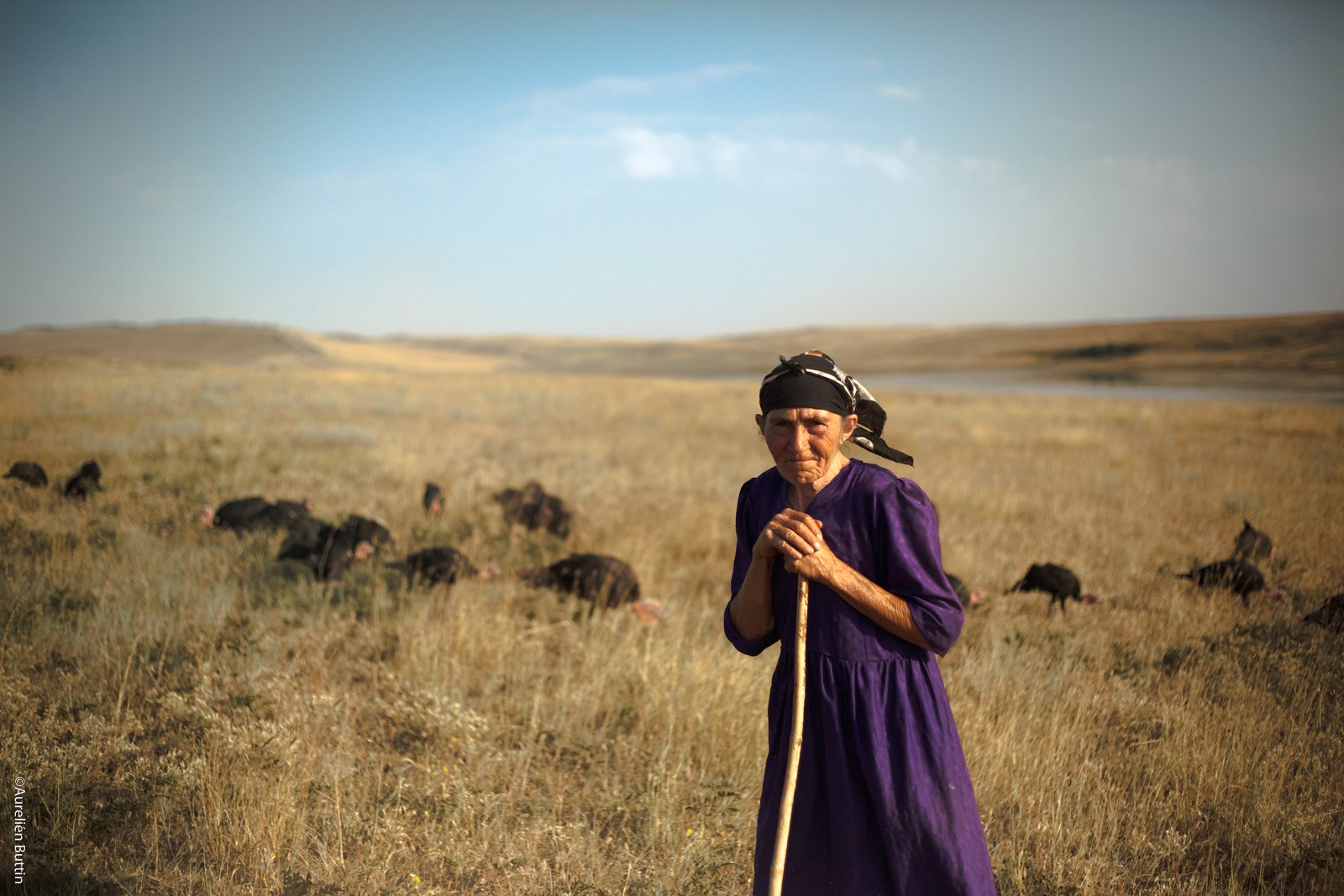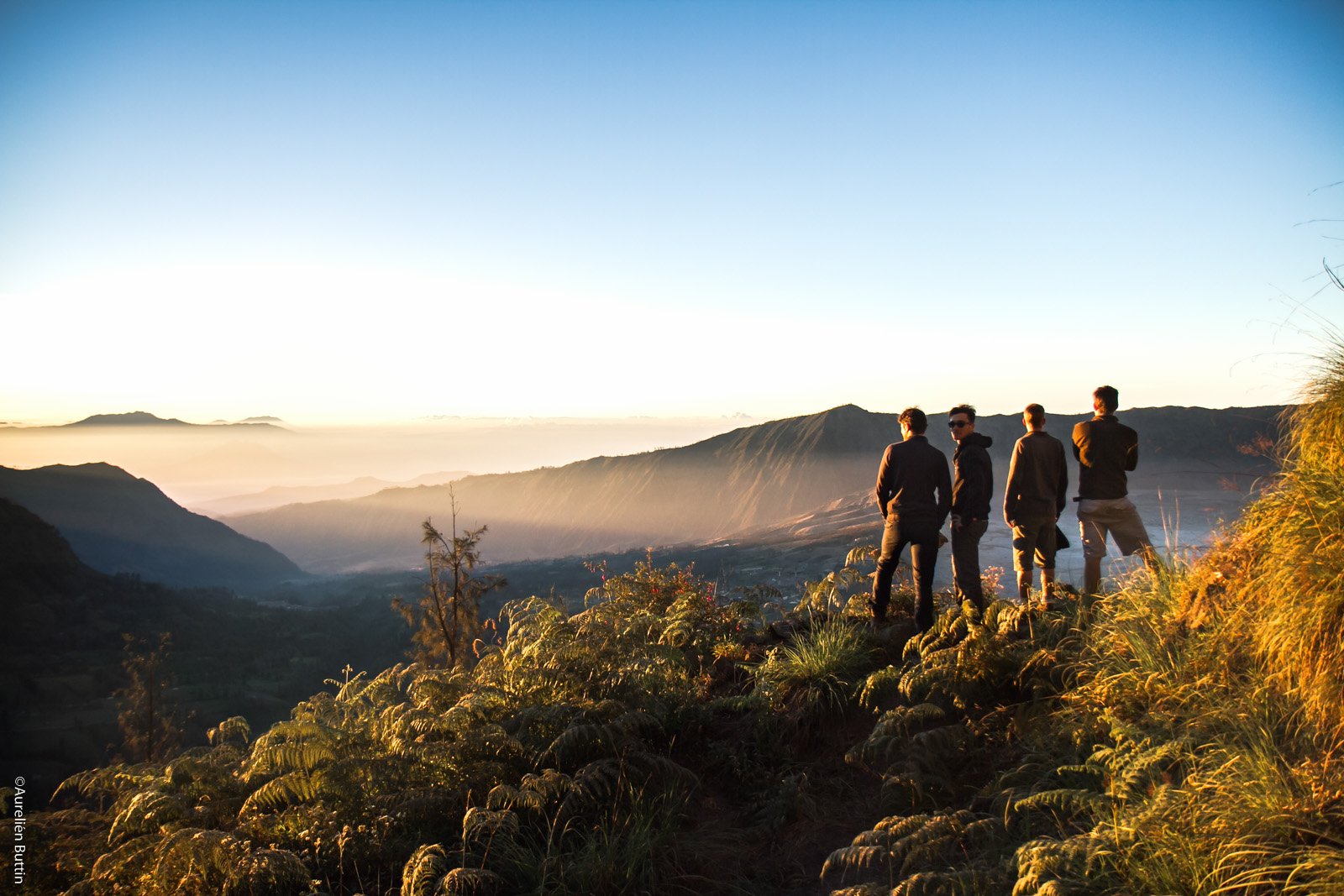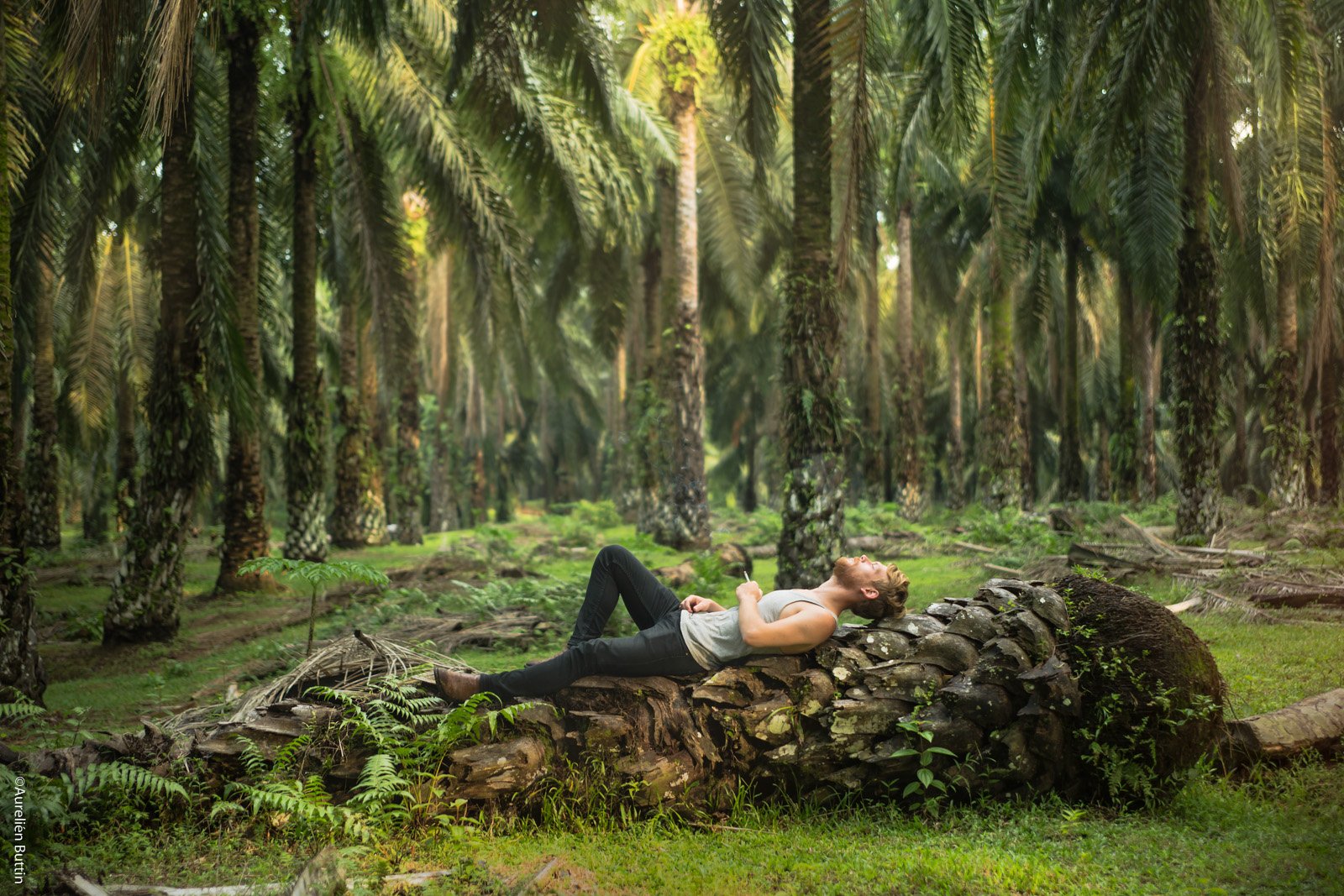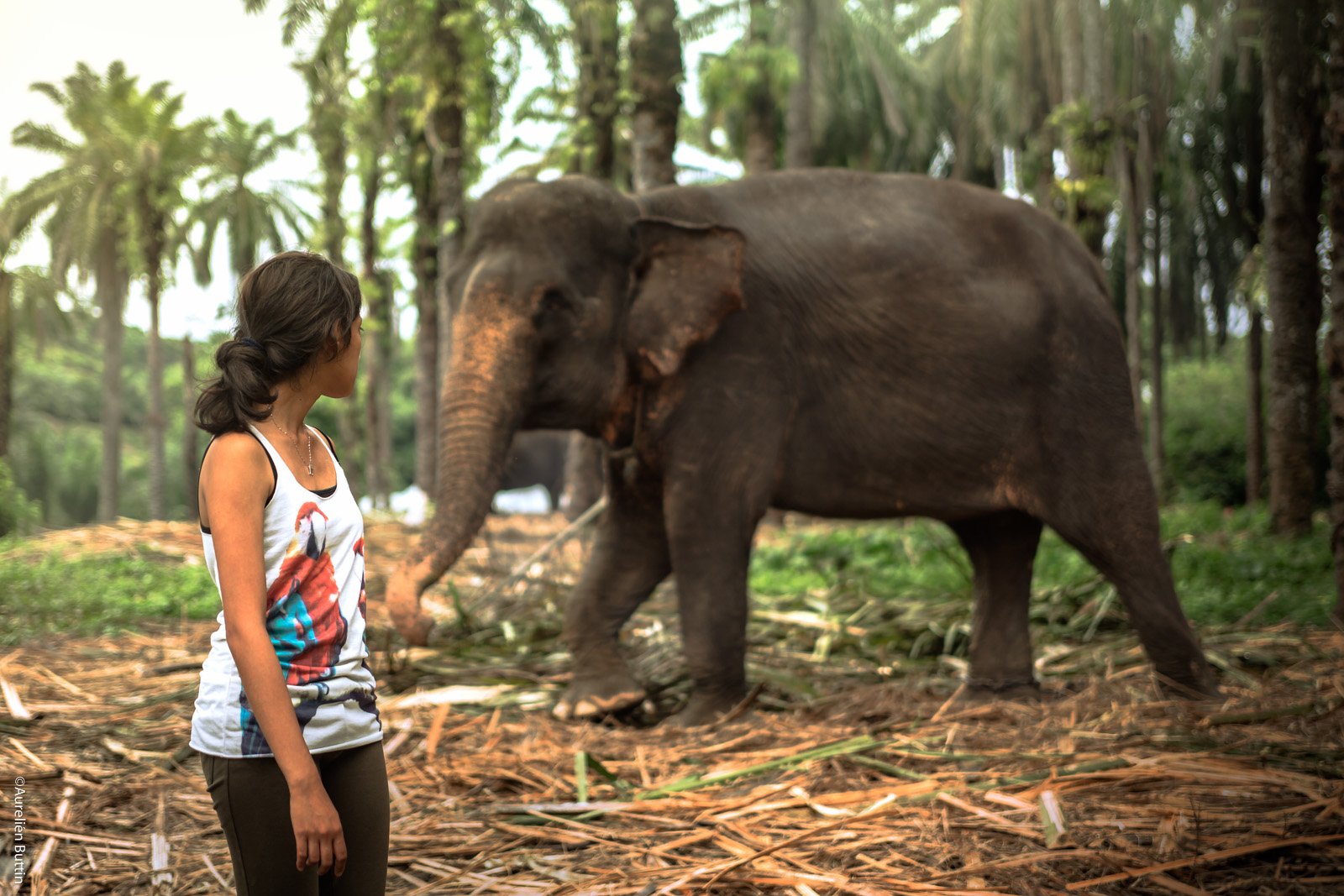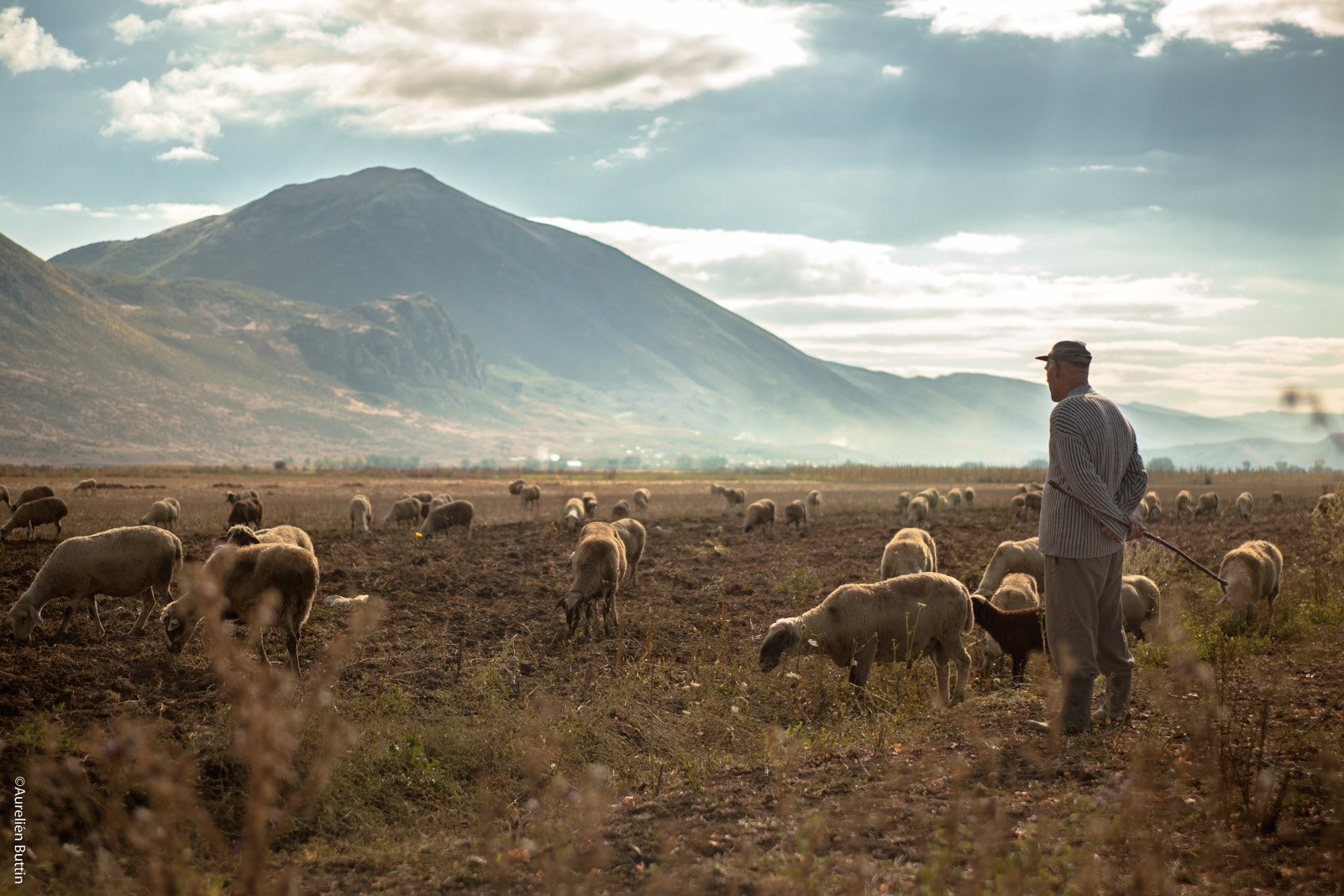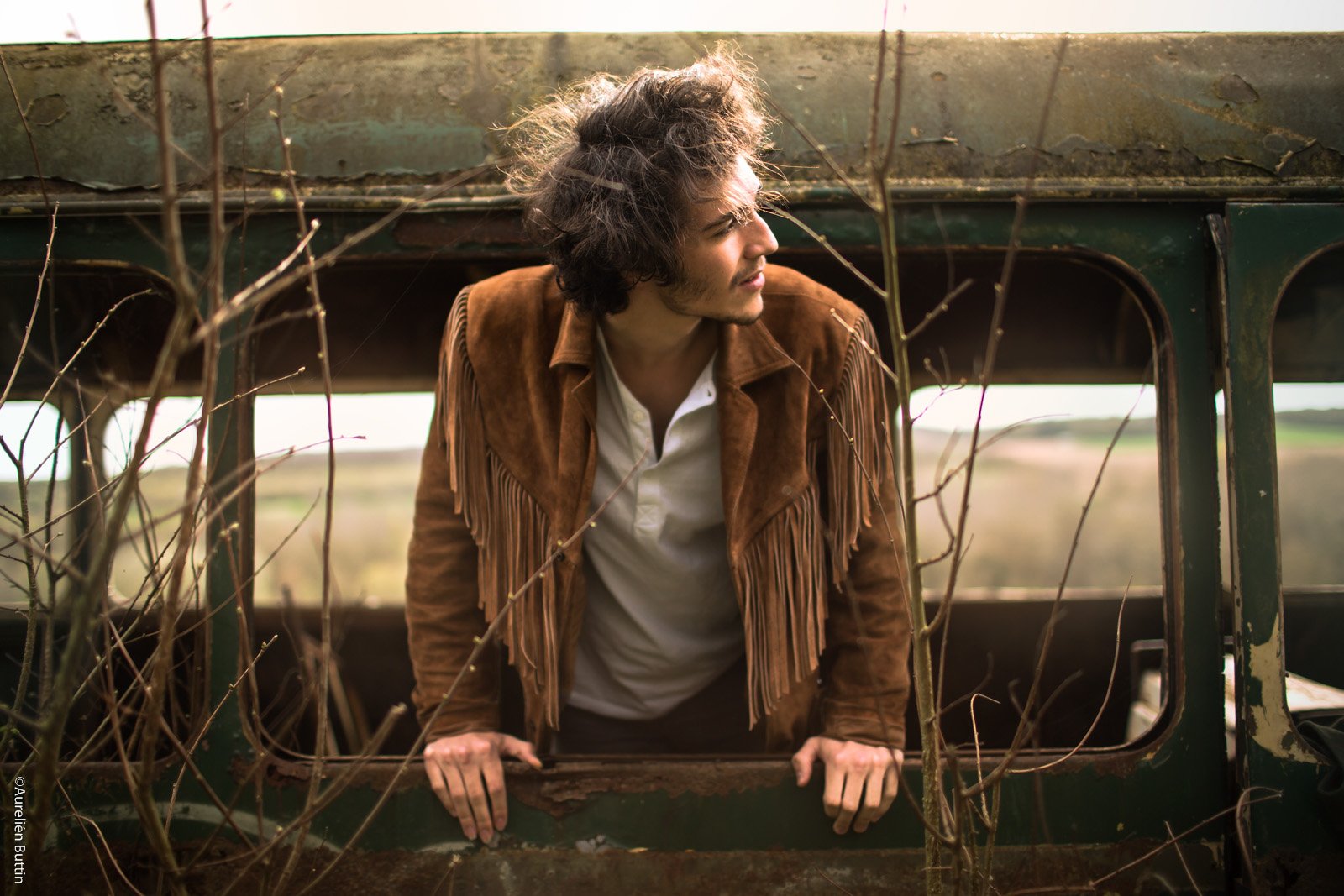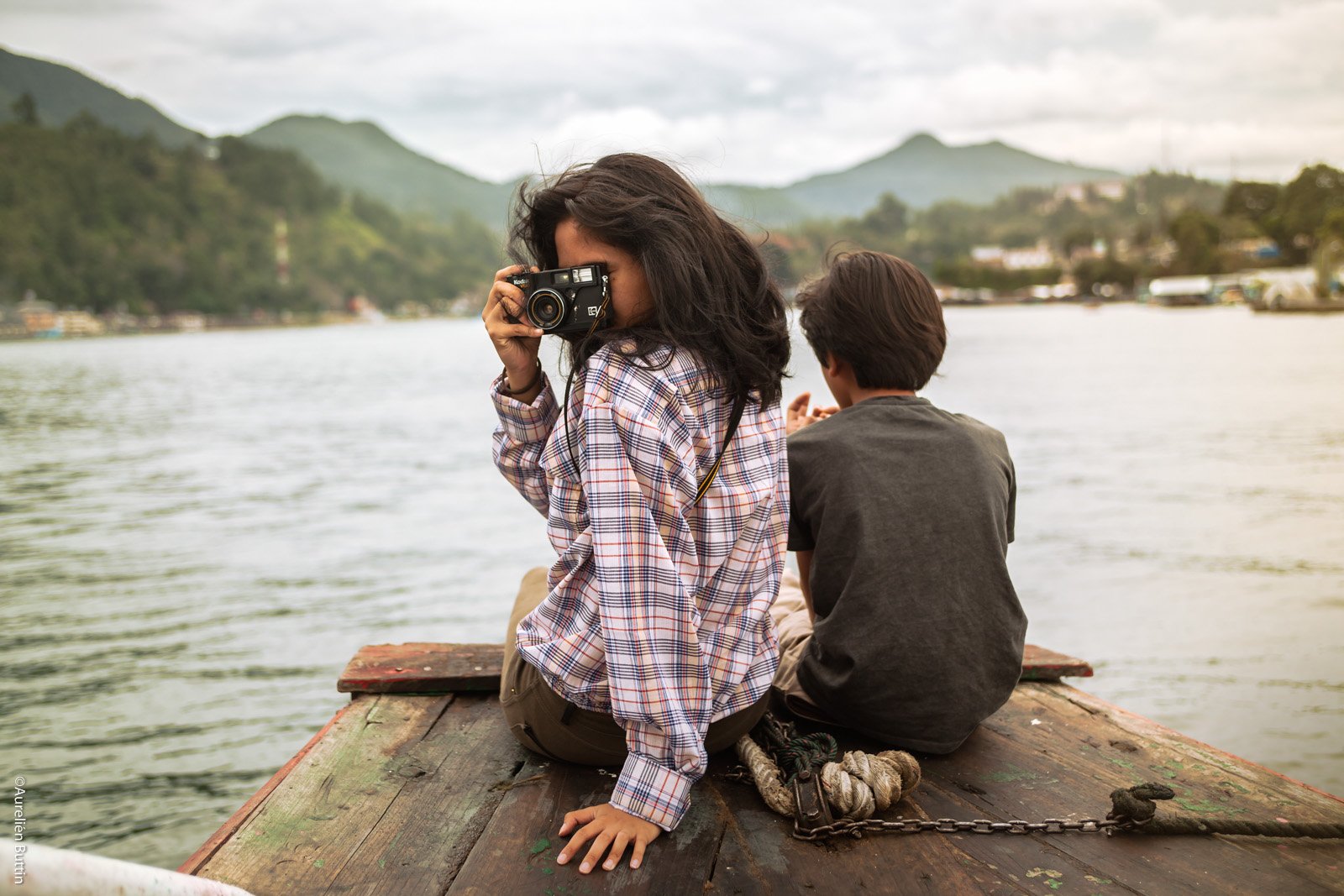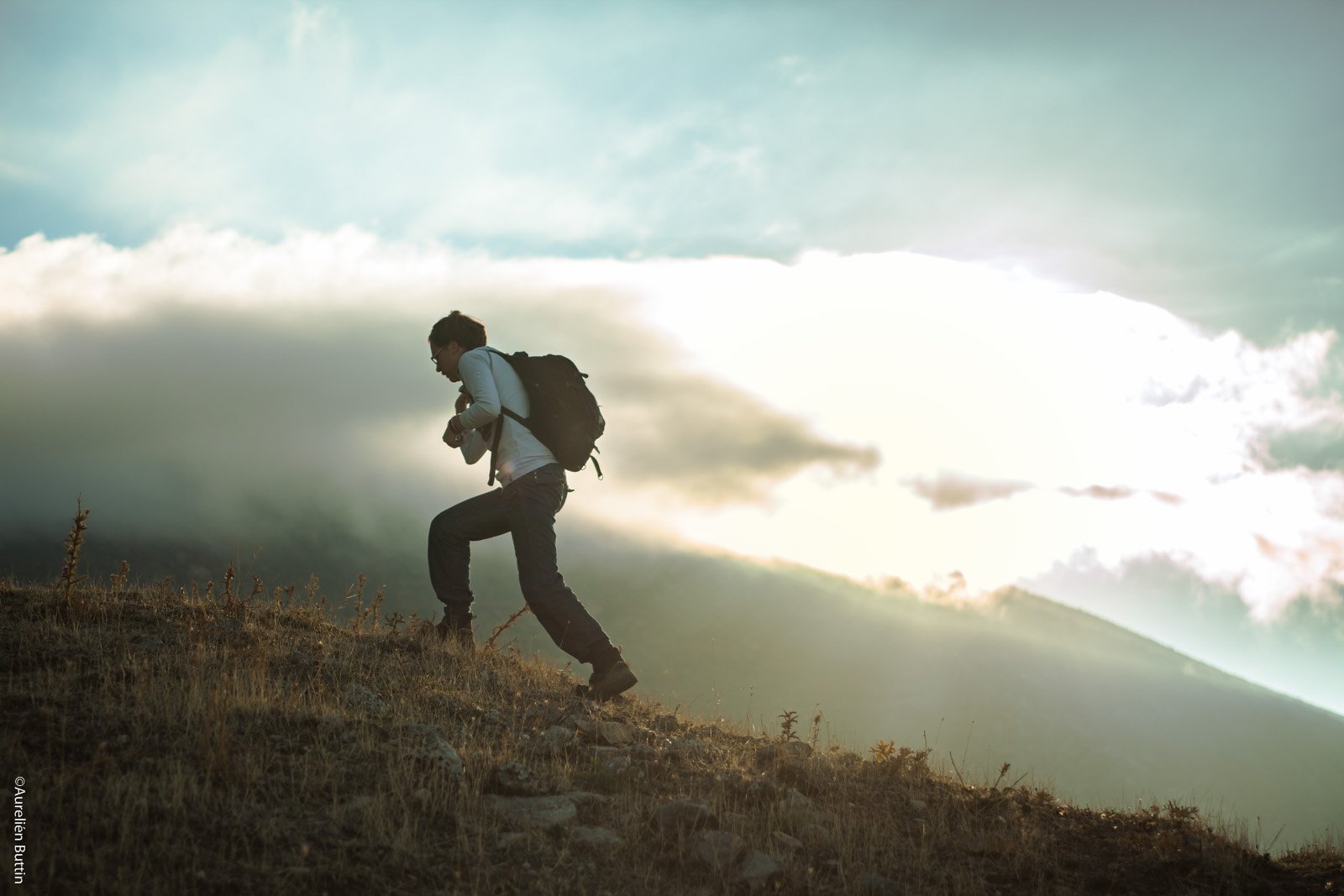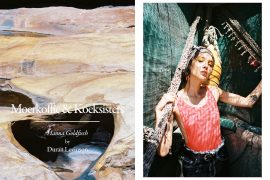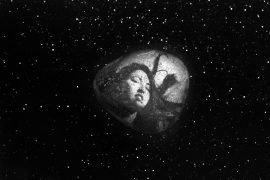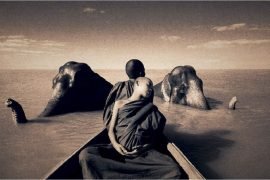French geographer Aurélien Buttin has wandered through over 40 countries on 3 continents, visiting both man-made and wild environments, iconic places such as the Sahara desert, the volcanoes of Indonesia and the mountains of Caucasus. Having started to experiment with photography in 2010 on a trip around Europe, he spends all his free time travelling the world, enriching his body of photographic work, immersing himself in native cultures and natural landscapes alike.
While traveling on the road, Aurélien had the chance to meet and photograph people of his own generation, people who all shared the same values and love for adventure and freedom. Establishing close rapport with his subjects, the outcome is sincere, emotive images full of intimacy, his subjects being natural, at ease.
During the summer of 2011 I traveled through Indonesia with two friends. For this journey we rented a 4x with a driver, for several days, at only 20 euros per day. One night we could hear the Bromo volcano, perched on a plateau at high altitude, and apparently not very far from where we were. After talking to our driver, he explained that we had to be ready to depart at 1 am. It has to be mentioned that in Indonesia, traffic is actually nonexistent. Therefore, three hours and some close encounters with death later, we arrived at a great ash plateau. The driver stopped and told us to climb the mountain and see the sunrise from the Bromo. We started climbing in shorts and T-shirts, with a temperature of 8 Celsius. Far away in the night, we could see a small light in the direction we were heading. It was a simple bamboo stand, a seller of coffee and tea in the middle of nowhere. We ordered three coffees for some euro cents and continued on our journey. At the top, everything was on time. The sun was rising over the chain of volcanoes. Batok, Bromo and Semeru in the background. It was the most beautiful sunrise I’ve seen in my entire life, and even without taking this photo I will remember it until the day I die.
Pendant l’été 2011 j’ai voyagé à travers l’Indonésie avec deux amis. Pour cette traversée on avait loué un 4×4 avec chauffeur seulement 20 euros chacun pour plusieurs jours. Un soir, on nous a parlé du Bromo, un volcan perché sur un plateau en haute altitude, et qui apparemment n’était pas très loin de où nous étions. Après en avoir parlé à notre chauffeur, ce dernier nous dit qu’il faudra être prêt à partir pour 1 heure du matin. Ce qu’il faut savoir en Indonésie c’est que le code de la route n’existe pas réellement. Donc 3 heures plus tard et après avoir frôlé la mort une dizaine de fois en voiture nous sommes arrivé sur un immense plateau de cendre. Le chauffeur s’arrête et nous dit de monter la montagne à pied pour voir le levé du soleil Sur le Bromo. C’est donc en short et en T-shirt, par 8 degrés qu’on a commencé l’ascension. Au loin, dans la nuit, on aperçoit une petite lumière vers laquelle on se dirige, c’était un vendeur de café et de thé installé sur un tréteau en bambou au milieu de nul part, on commande trois cafés pour quelques centimes d’euros et on continus notre route. Arrivé au sommet le spectacle était au rendez vous. Le levé de soleil sur la chaîne de volcans, au premier plan le Batok, au second plan, avec le cratère fumant, le Bromo, et au dernier plan le Semeru. C’est le plus magnifique levé de soleil que j’ai vu de toute ma vie, et même sans prendre cette photo je m’en souviendrai jusqu’à ma mort.
On the way to climb up to the crater of Bromo, we met a little old lady selling flowers and trinkets of all kinds. She tells us how it is customary to cast something into the crater, as an offering to the gods. We arrived at the edge of the crater, a dark hole that reaches into the bowels of the earth, while light white smoke is rising. The feeling is indescribable, to be on the edge of the deep pit, without being able to see the background. I had climbed up to the craters of volcanoes in the past, Puy de Dôme in France or Vesuvius in Italy, though there were great differences. These were craters formed of volcanic rock, and quite solid, whereas the crater of Bromo consists of ash. Sitting on the edge of this 200m deep hole, knowing that if you slide there is no turning back, reminded me of the mouth of the Sarlacc in Return of the Jedi. Scary indeed. It is here, standing on the edge of Bromo that I took this photo, picturing the Hindu temple, devoted to the gods of the volcano, standing alone amidst a desert of ashes.
Sur le chemin pour monter jusqu’au cratère du Bromo nous avons rencontré une petite vieille qui vendait des fleurs et des babioles en tout genre. Elle nous dit que c’est pour jeter dans le cratère en guise d’offrande pour les dieux. Arrivé au bord du cratère un trou béant et sombre qui se plonge dans les entrailles de la Terre avec une légère fumée blanche qui s’en échappe. La sensation est indescriptible de se retrouver au bord d’un immense trou sans voir le fond. J’étais déjà monté au bord d’autres volcans auparavant comme le Puy de Dôme en France ou le Vésuve en Italie par exemple, mais ces cratères était en roches volcaniques et solide, tandis que sur le Bromo le cratère est constitué de cendre. Assis sur le rebord avec cette énorme trou 200 mètres plus bas on sait que si on glisse on le remonte pas, on se croirait sur le bord de la gueule du Sarlacc dans le retour du Jedi. Flippant… C’est d’ici, debout sur le bord du Bromo que j’ai pris la dernière photo « Ashes Temple » où l’on voit un temple hindouiste, qui a était construit pour les dieux du volcan, au milieu d’un désert de cendre.
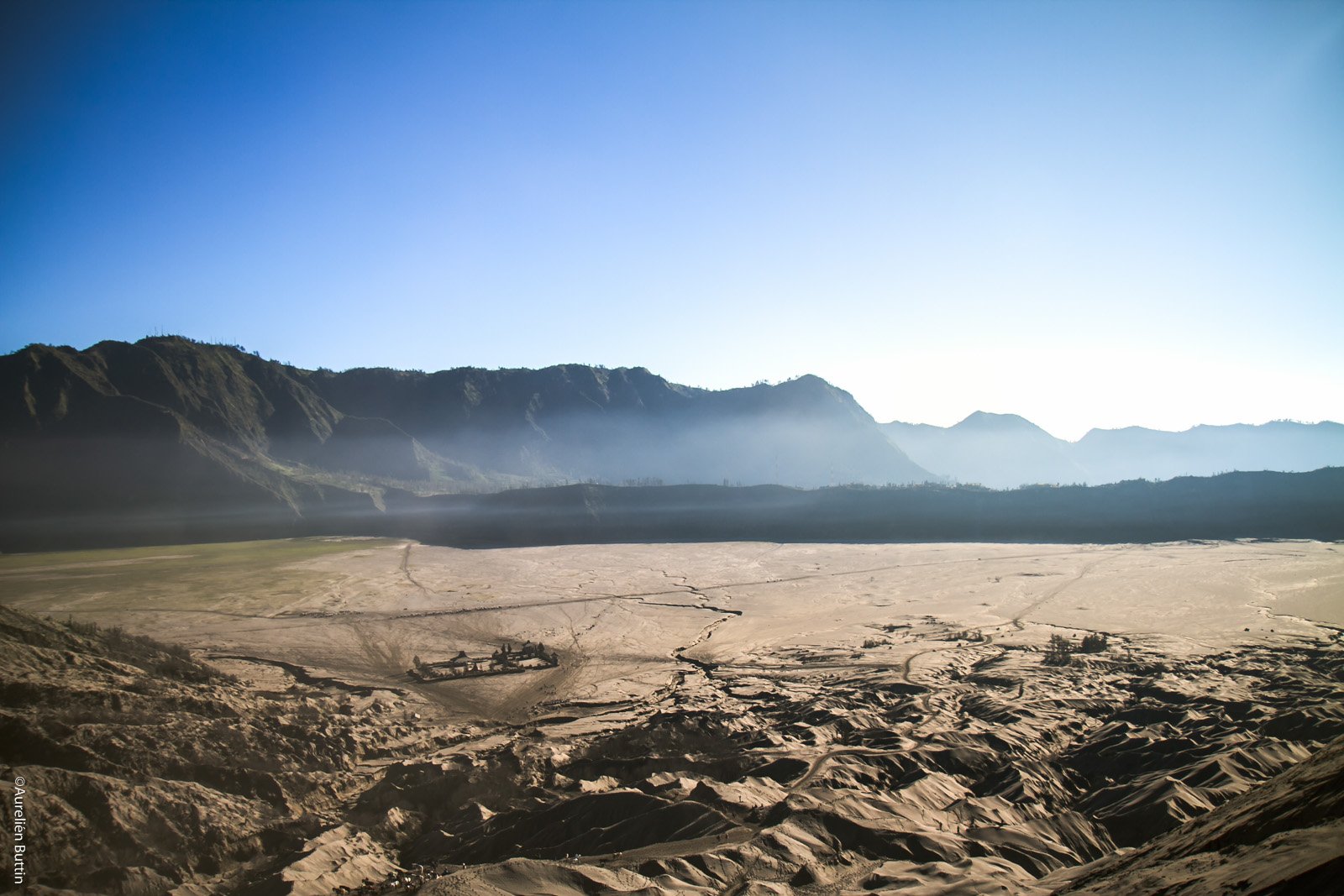
Then, we descended to the famous ash field, where we met local horses. Asians are, in general, not very tall, neither am I, but their horses had very short legs, which I found surprising. When I took the photo, I had not even seen the jeep, as I was focused on the horses at the time. The photo was very overexposed and if it took me two years to edit the image, it was because I did not see the point. After all it was just guys on horseback. Yet when I sat to rework it, I lowered the brightness and the vehicles, hidden by the overexposure, appeared on my screen and I changed my mind. Long live technology.
Nous sommes ensuite redescendu de jour sur ce fameux plateau de cendre où nous avons croisé des locaux à cheval. Les asiatiques ne sont, en général, pas très grand (moi non plus d’ailleurs), mais leurs chevaux sont vraiment court sur pattes ce qui me surpris assez. Quand j’ai pris la photo que j’ai appelé « Wild Wild East » je n’avais pas vu les jeep au loin tellement j’étais concentré sur les chevaux à ce moment là. La photo était vraiment surexposé et c’est en la retouchant chez moi deux ans plus tard, qu’en baissant la luminosité les jeeps sont apparues sur mon écrans. Si j’ai mis deux ans à retoucher cette photo c’est parce que je n’en voyait pas l’intérêt, après tout c’était juste des gars à cheval, mais les jeep, qui était cachées par la surexposition, m’ont fait changer d’avis, vive la technologie.
In the summer of 2012, I visited Georgia. I had planned to travel with a friend, who unfortunately suffered a heart condition four days prior to our departure, therefore was unable to accompany me. So I left alone to spend one month in Georgia and Armenia. Once there, the locals of Tbilisi asked me if I was aware of the legend of Prometheus. Since I did not know it, they explained to me that it is a myth from Greek mythology; Prometheus (Greek for he who thinks before) was a Titan who is credited with creating the humans from rock and water. What is more, in order to help humanity, he stole the fire from the gods of Olympus and gifted it to men, angering Zeus. The Olympian god demanded him to be punished and Prometheus was chained to Mount Kazbegi (Kazbek) in the Caucasus. His punishment was to be attacked every day by an eagle, eating his liver, which was restored every night, thus being condemned to eternal suffering. The next morning I hopped on a marchoutka, a Georgian minibus, and headed towards Mount Kazbegi. Fifteen people for 10 places, sitting on crates of vegetables. Georgians are not any more careful on the road, compared to Indonesians and you often come across stretches of road high in the mountains, without asphalt or protective fence. At each cross that we approached, the passengers crossed themselves thrice, the driver included. This led me to believe that the next turn would be the last… Once in a tiny mountain village, a few kilometers from the Chechen border in Russia, I am starting to climb the winding path that led me over 2000 meters high, where I was able to take this picture, where hidden by a cloud, we can see Mount Kazbegi.
A l’été 2012 je suis allé en Géorgie. Je devais partir avec un ami qui a eut un problème cardiaque 4 jours avant le départ, et qui n’a donc malheureusement pas pu m’accompagner. Je suis donc partie pendant un mois en Géorgie et en Arménie, seul. Sur place des gens à Tbilisi m’ont demandé si je connaissais la légende de Prométhée. Et comme je ne la connaissais pas ils m’expliquèrent que c’est une légende tirée de la mythologie grecque. Prométhée est un Titan qui a crée les humain à partir de roche et d’eau et que, pour favoriser la race humaine, il vola le feu de l’Olympe au dieux et la donna aux Hommes, Zeus pour le punir ordonna de l’enchaîner au mont Khazbegi, dans le Caucase, où chaque jour un aigle géant viendra lui dévorer le foie, et chaque nuit son foie repousserait, le condamnant ainsi à la souffrance éternelle. Le lendemain matin j’ai sauté dans un Marchoutka (minibus en géorgien) direction le mont Khazbegi. A 15 dans un 10 places, assis sur des cagettes de légumes. Les géorgiens ne sont pas plus prudent que les indonésiens sur la route, en plus, on tombe souvent sur des portions de route en pleine montagne non goudronnées, sans bordures de sécurité et à chaque croix que l’on croise de près ou de loin tous les gens du bus font un signe de croix trois fois de suite, le chauffeur compris. Ce qui me laissai penser que le prochain virage serait le dernier… Une fois arrivé dans un tout petit village de montagne à quelques kilomètres de la frontière Tchétchène, en Russie, je commence à grimper sur un chemin tortueux qui m’amena 2000 mètres pus haut où j’ai pu prendre cette photo où l’on voit, caché par les nuage, le mont Khazbegi.
In February 2013, I traveled to Morocco for several reasons. The first was that a Moroccan friend invited me to his parents, the second was that my mother was that my mother is a Pied-Noir (people of French ancestry who lived in French North Africa) and I wanted to see the city she was born and grew up, Fez. I traveled from north to south with two friends, through Tangier, Asilah, Rabat, Fez, Casablanca, Marrakech and Ouarzazate. Our first friend stayed with her parents in Rabat, so we were alone in Ouarzazate, a beautiful city, and were hosted by a German in his forties who houses travelers. One morning, Yoshi, a Japanese person, prepared his bags and told me that he was leaving for Sahara for a few days and we decided to join him. When we arrived at the bus station my friend got sick and she decided to remain in Ouarzazate, just 10 minutes before the bus departed and I continued on with Yoshi. At nightfall the bus stopped in a town near the desert M’Hamid and there a driver was waiting for us. Once our bags were loaded in the Renault 5, we started to push deeper into the desert. There was no road, but the driver appeared to know where he was going, though I was not sure.
En février 2013, je suis allé au Maroc, pour plusieurs raisons. La première était qu’une amie marocaine m’invitait chez ses parents, et la seconde était que ma mère est pied noir et que je voulais voir la ville où elle est née et où elle a grandie, Fez. J’ai voyagé du Nord au Sud avec deux amies en passant par Tanger, Assilah, Rabat, Fez, Casablanca, Marrakech et Ouarzazate. Notre première amie était restée chez ses parents à Rabat. J’étais donc à Ouarzazate, qui est une ville magnifique, chez un allemand d’une quarantaine d’années qui hébergeait des voyageurs de passages. Un matin, Yoshi, un japonais, préparait son sac et me dit qu’il part quelques jours dans le Sahara, nous avons donc décidé de le suivre. Arrivé au départ des bus mon amie est tombée malade et a décidée de rester à Ouarzazate 10 minutes avant le départ du bus et j’ai embarqué seul, avec Yoshi. A la nuit tombée, le bus s’est arrêté dans une ville près du désert de M’Hamid, là, un chauffeur nous attendait. Une fois les sacs chargés dans la Renault 5, nous avons commencés à nous enfoncer dans le désert. Il n’y avait pas de route mais le chauffeur semblait savoir où il allait, ce qui n’était pas mon cas.
As we drove in a desert of sand and pebbles, I noticed in the distance a immense shape and I could not stop wondering if it was the relief of the dunes or mountains, it was so impressive. It was actually the mountains and once we crossed them, the Sahara desert opened to us. The car pushed on and after one hour, we reached at a camp. The night was cold, the Tuareg served us tajine in a Berber tent with goatskins on the sand, where we ate by the candlelight. We then went to our tent, identical to the first one, to sleep on the animal skins that lay on the sand. Without any light pollution from the cities, the stars were perfectly visible. We were in the middle of the Sahara. The next morning, after traveling for a few kilometers on camels, we stopped to have tea in another camp; this is where I took the previous photo “King of the Desert”. After that I returned. Yoshi continued to cross the Sahara by camel. I never saw him again.
Alors que nous roulions dans un désert de sable et de cailloux j’ai vu au loin une immense silhouette et je n’arrêtai pas de me demander si c’était le relief des dunes ou d’une montagnes tellement c’était impressionnant. C’était en fait des montagnes, mais une fois celle-ci traversées la désert du Sahara s’ouvrait à nous. La voiture patinée dans le sable et après une heure de route nous étions arrivé au campement. La nuit était froide, des touaregs nous on servis un tajine dans une tente berbère en peau de chèvre à même le sable et nous avons mangé à la lueur de la bougie. Nous avons ensuite rejoints notre tente identique à la première pour dormir sur quelques peaux de bête posées sur le sable. Les étoiles, sans la pollution lumineuse des villes était parfaitement visibles. Nous étions au milieu du Sahara. Le lendemain matin, après avoir parcouru quelques kilomètres à dos de chameau nous nous somme arrêté pour prendre le thé dans un autre campement, c’est ici que j’ai pris ma photo « King Of The Desert ». Après ça j’ai rebroussé chemin, pris par le temps, Yoshi, lui a continué, sa traversée du Sahara à dos de chameau, je ne l’ai jamais revu.
In September 2013, I traveled to Albania, to work in the basin of Korçë for a month in in a geo-archaeological survey for the French School of Athens. I was hosted in the in the Archaeological Museum of Korçë and every day I explored the field and mapped what once was a lake. Farmers in the area still use wagons pulled by horses. When one of them dies, it is thrown on the roadside. One day, as I was walking towards my workplace, I noticed a dead horse on the edge of the road, with two blood covered dogs eating the carcass. I was too far away to take a photo, so I approached cautiously, since dogs in Albania are wild and can attack humans. They move in packs and, as it happened to me, they can surround you. In these cases, there are two solutions, if they are few, you can throw stones at them to scare them away, or if you are outnumbered, you have to sit and wait. I stayed like that once, sat and waited for almost an hour until they left. Anyway, when I approached the carcass of the horse, the dogs became frightened and moved to the tall grass a few meters away. For this reason, I was not able to capture the image I wanted, only the carcass of the horse cart.
En septembre 2013 je suis partie un mois en Albanie pour travailler en prospection géo-archéologique pour l’école française d’Athènes dans le bassin de Korçë. Le logé dans le musée archéologique de Korçë et tous les jours je partais sur le terrain pour prospecter et cartographier les environ de ce qui était autrefois un lac. Là bas, les agriculteurs se déplacent en charrette tirées par des chevaux. Quand l’un d’eux meurt, les agriculteurs le détache et le jette sur le bord de la route. Ce jour là, alors que je me rendais sur mon lieu de travail j’ai vu un cheval mort sur le bord de la route avec deux chiens blancs, recouvert de sang, la tête dans la carcasse en train de manger le cheval. J’étais trop loin pour prendre correctement ma photo, je me suis donc approché prudemment, puisque les chiens en Albanie sont sauvages et peuvent attaquer l’homme. Ils se déplacent en meute et, comme cela m’est arrivé, ils vous encerclent. Dans ces cas là, il y a deux solutions, si ils sont peu nombreux, il faut leur jeter des pierres pour les effrayer, ou si ils sont supérieurs en nombre, il faut s’asseoir et attendre. Je suis resté une fois comme ça, assis, à attendre pendant près d’une heure qu’ils s’en aillent. Bref, quand je me suis approché de la carcasse du cheval les chiens ont prit peur et sont partient dans des hautes herbes à quelques mètres de là. Je n’ai donc pas pu prendre la photo qu je voulais, mais juste la carcasse du cheval, vide.
During my stay in Albania, I wanted to spend a weekend in the mountains. I was reluctant to do so because the elderly in the city told me that there were packs of wolves in the mountains. They advised me to stay away from villages and any herds of sheep, since where there are sheep there are usually wolves nearby. My starting point was a church on top of a mountain that can be seen in the previous picture. I then started to venture into the mountain where I took the other two photos, but when the night began to fall, I heard wolves howling death. So I took my backpack and went back to town.
Pendant mon séjour en Albanie, j’ai voulu partir passer un week end dans la montagne. J’ai longtemps hésité à le faire puisque des personnes âgées de la ville m’avaient dit qu’il y avait des meutes de loups dans les montagnes. Ils m’ont dit de me tenir à l’écart des villages et des troupeaux de moutons puisque là où il y a des moutons il y a des loups pas loin. Mon point de départ était une église au sommet d’une montagne, celle que l’on voit sur « The Axis Of The Faith ». J’ai ensuite commencé à m’aventurer dans la montagne où j’ai prit les deux autres photos, mais quand la nuit à commencée à tomber j’ai entendu des loups hurlaient à la mort. J’ai donc reprit mon sac et je suis reparti en ville.
During my last day of work in Albania, we climbed on an oppidum, which is a fortified settlement on an elevated space. After climbing towards the top, we could view the entire valley. My Albanian colleague Yullka was sitting on the edge of the precipice and this is where I took this photo with the valley of Korce in the background.
Pendant mon dernier jour de travail en Albanie, nous sommes monté sur un oppidum, qui est une forteresse de défense sur un lieu surélevé. Après avoir escaladé toute la montagne, nous avions une vue sur toute la vallée. Ma collègue albanaise, Yullka, c’était assise au bord du précipice et c’est de là que je l’ai prise en photo avec la vallée de Korçë en arrière plan.
